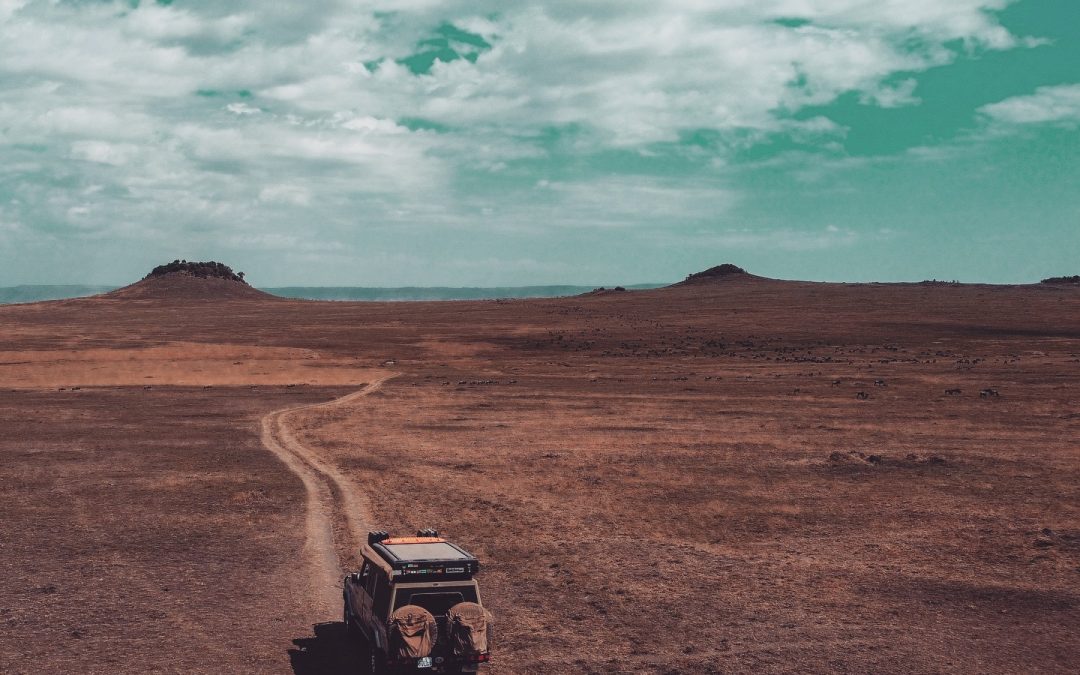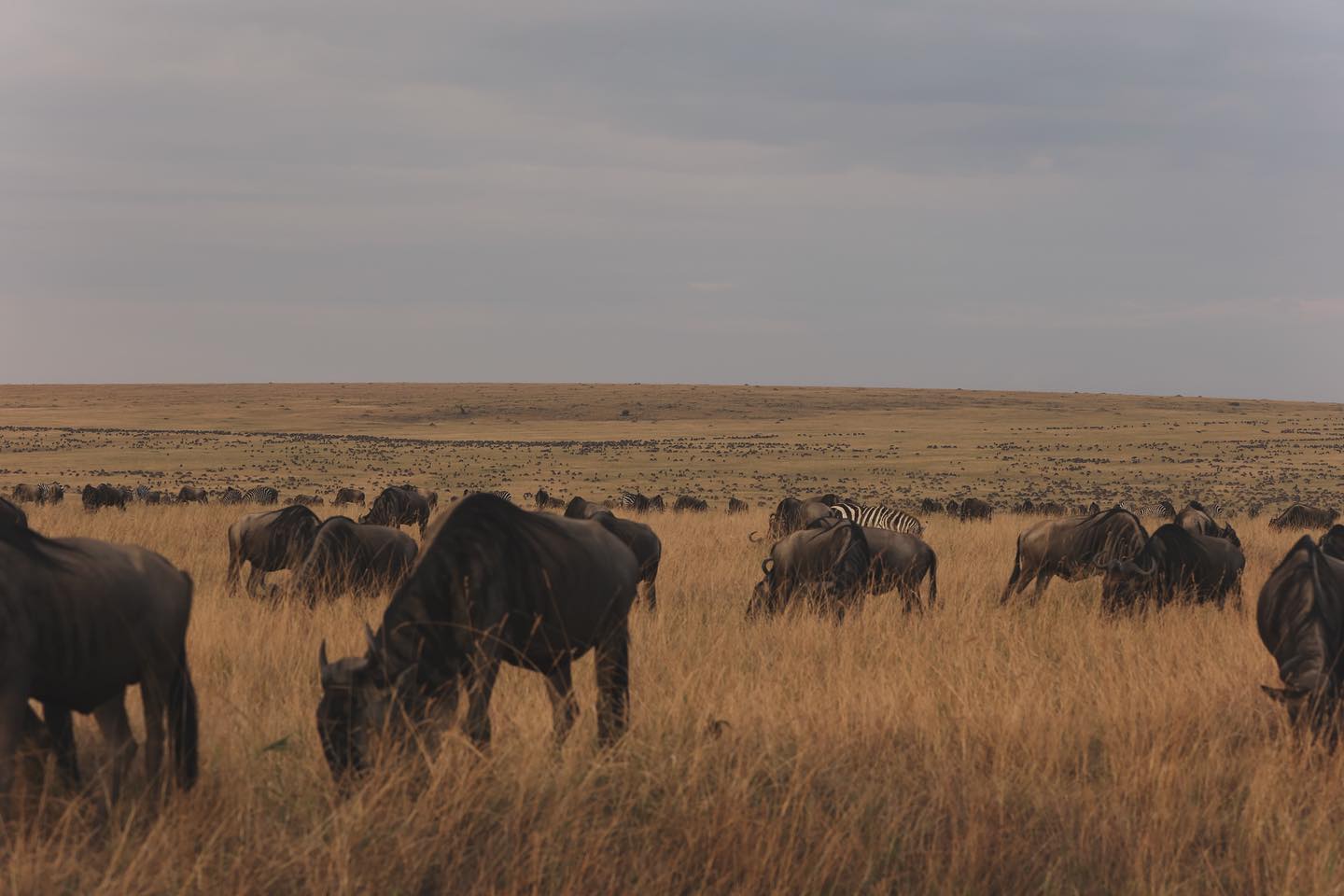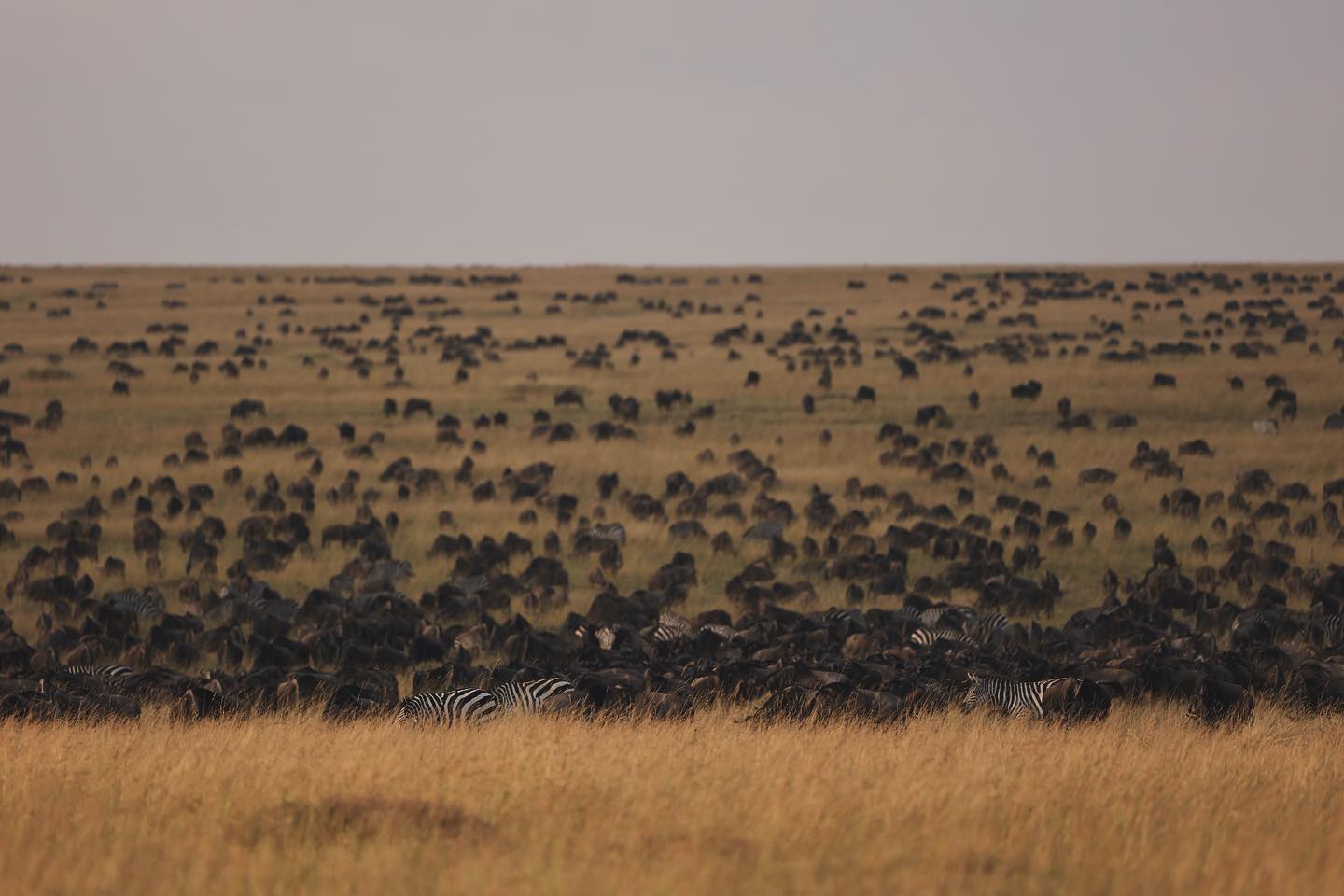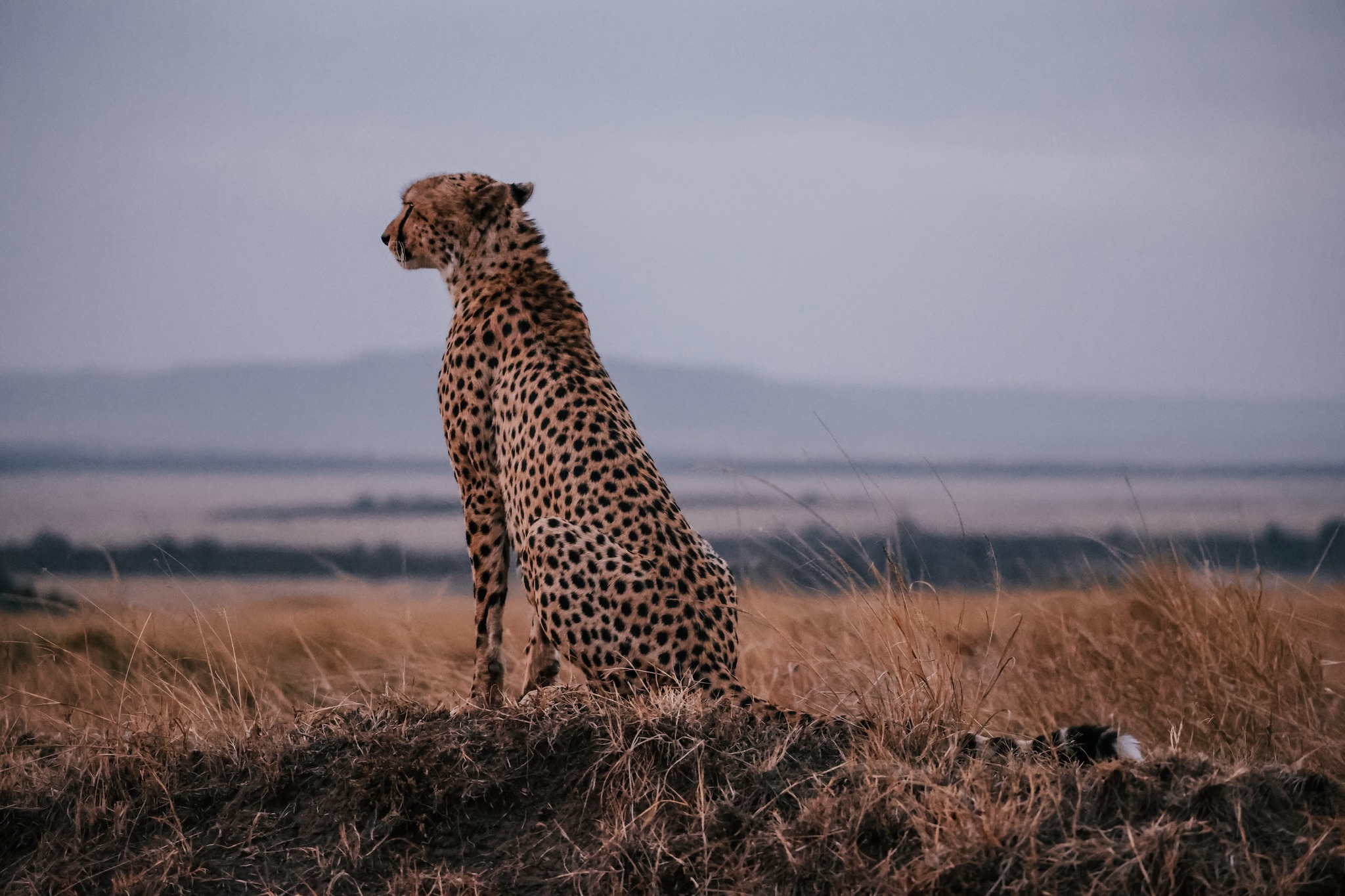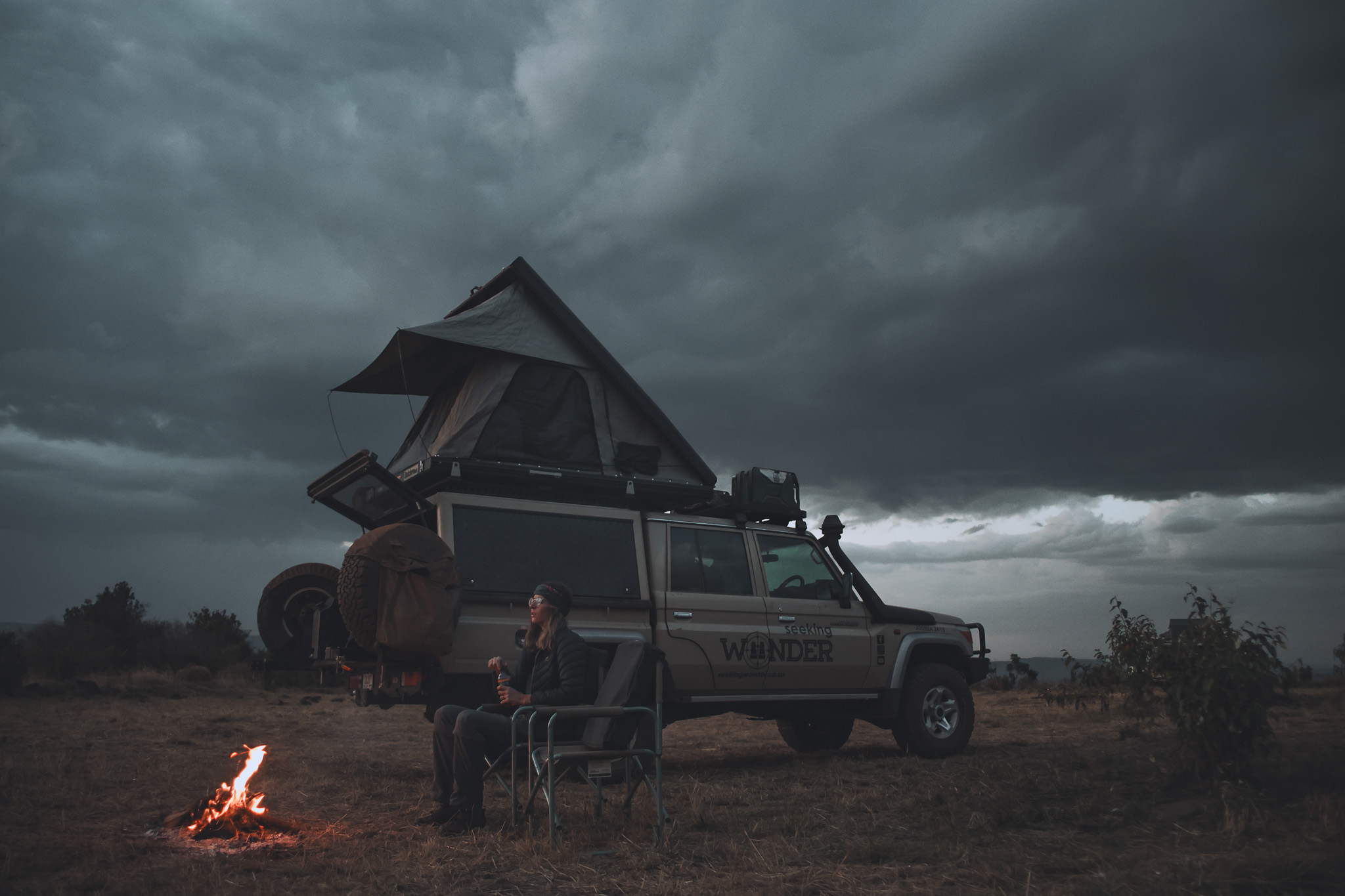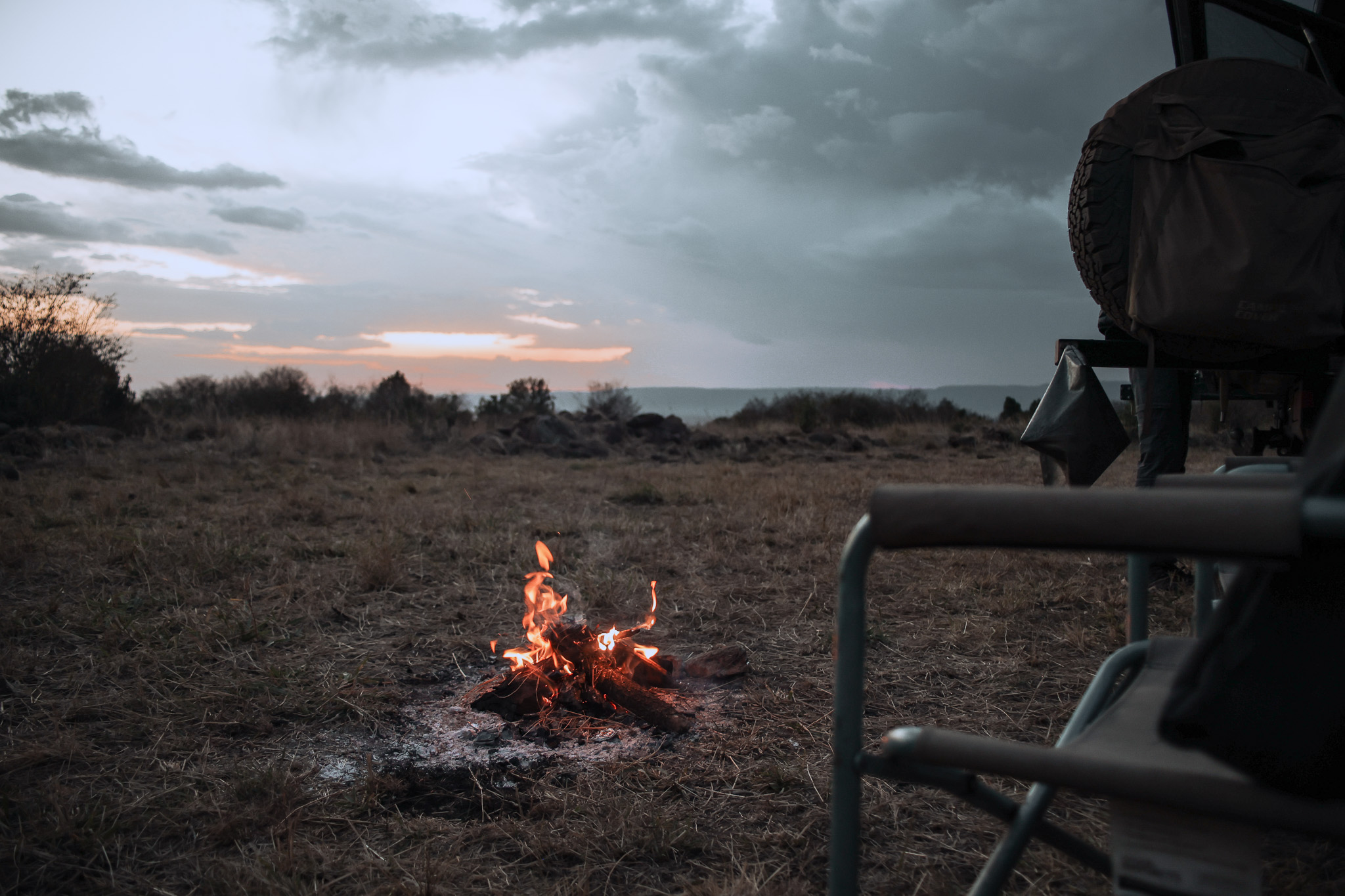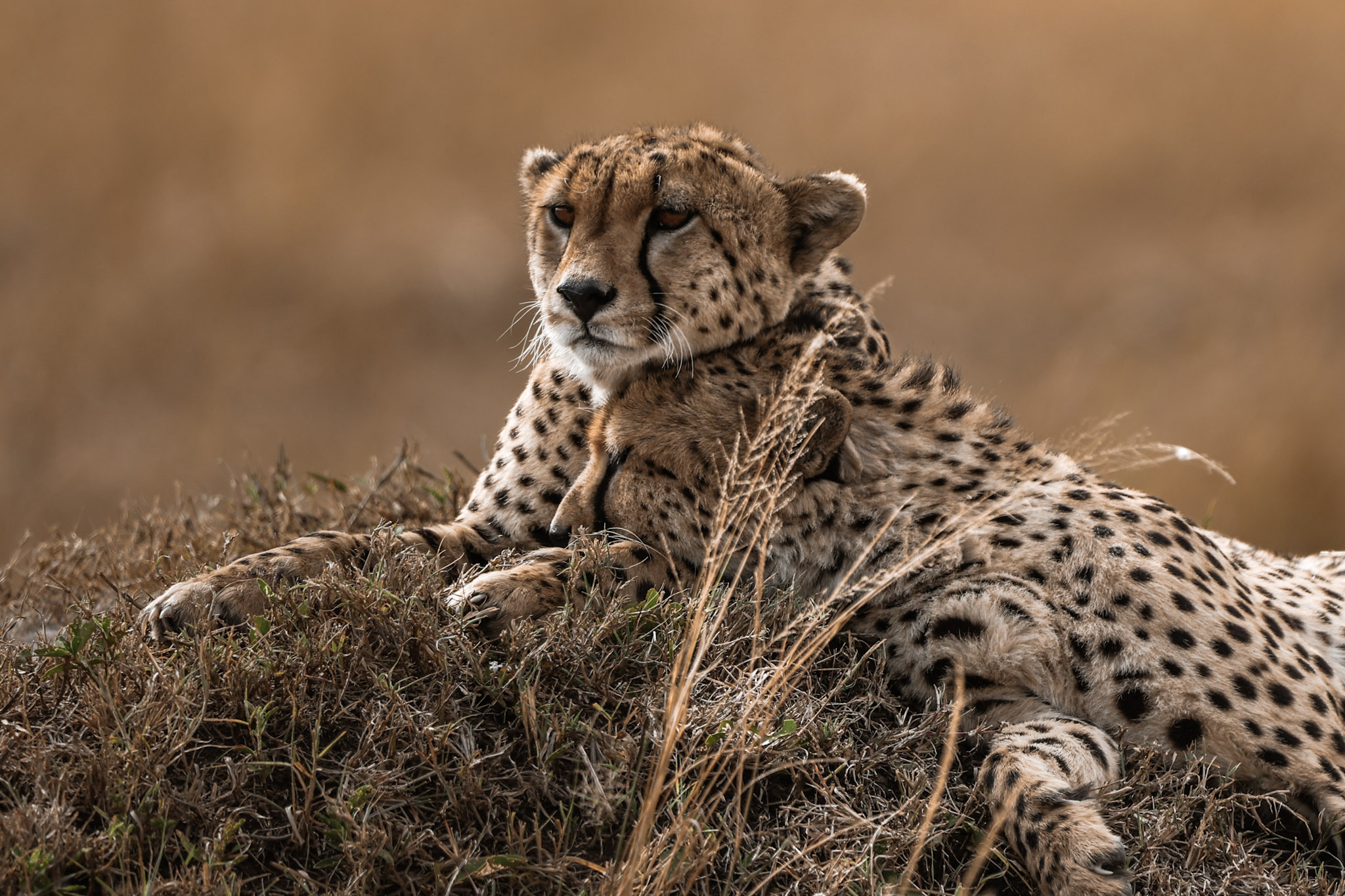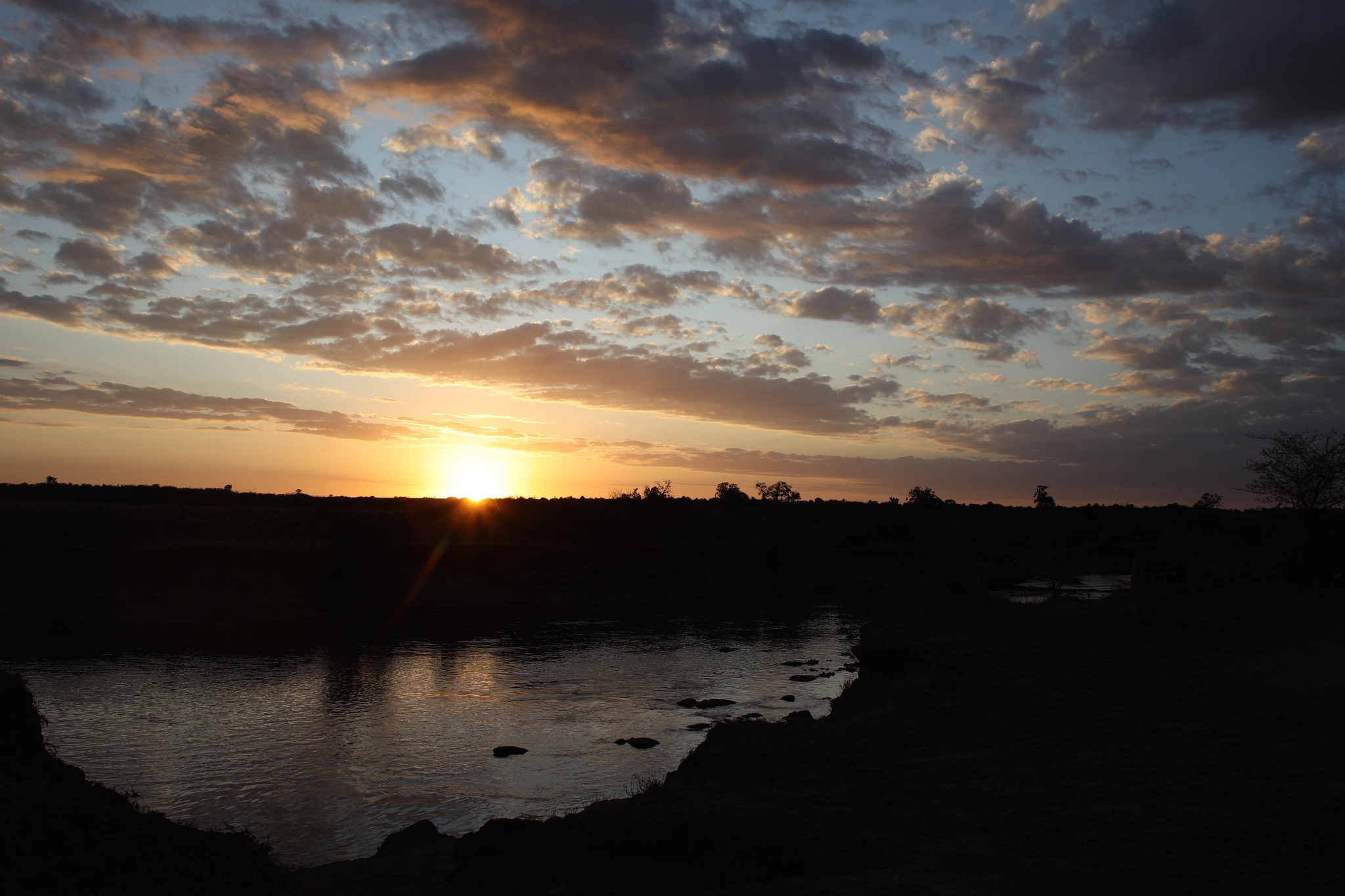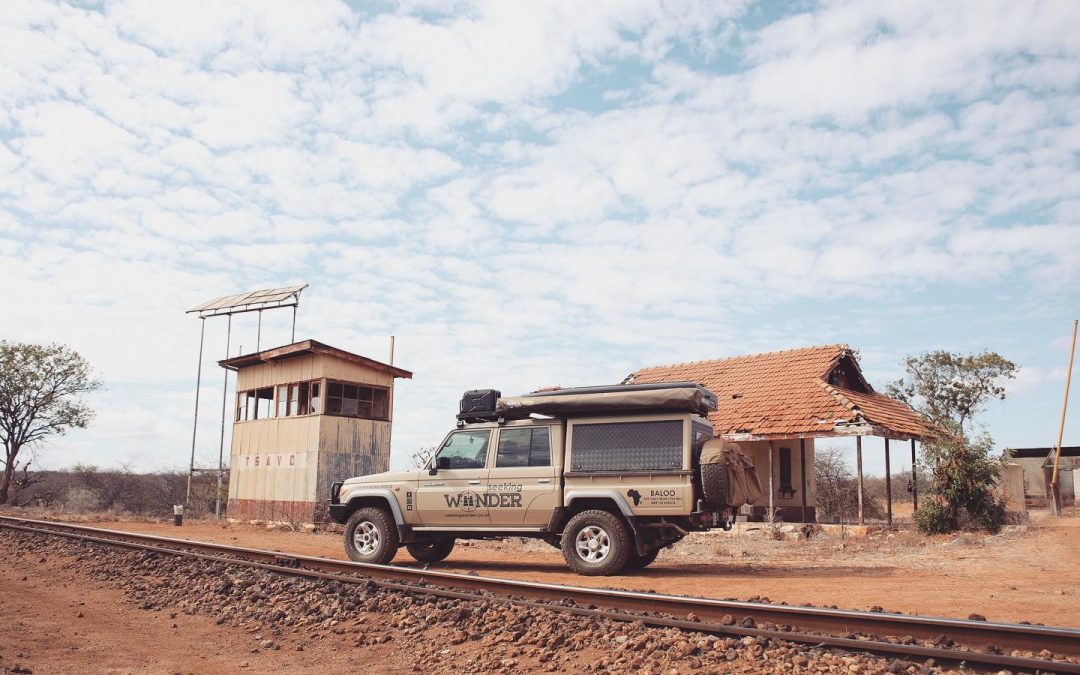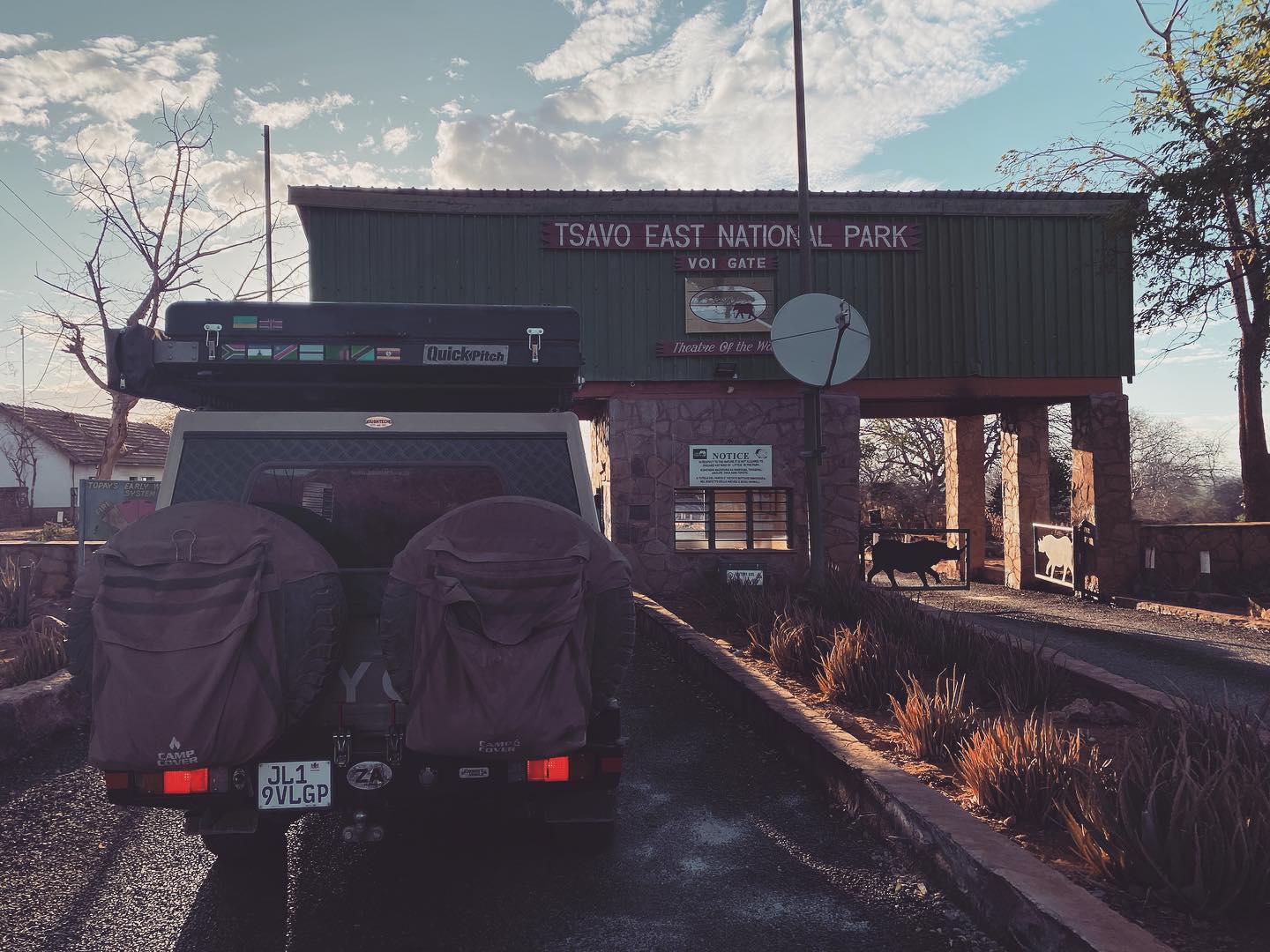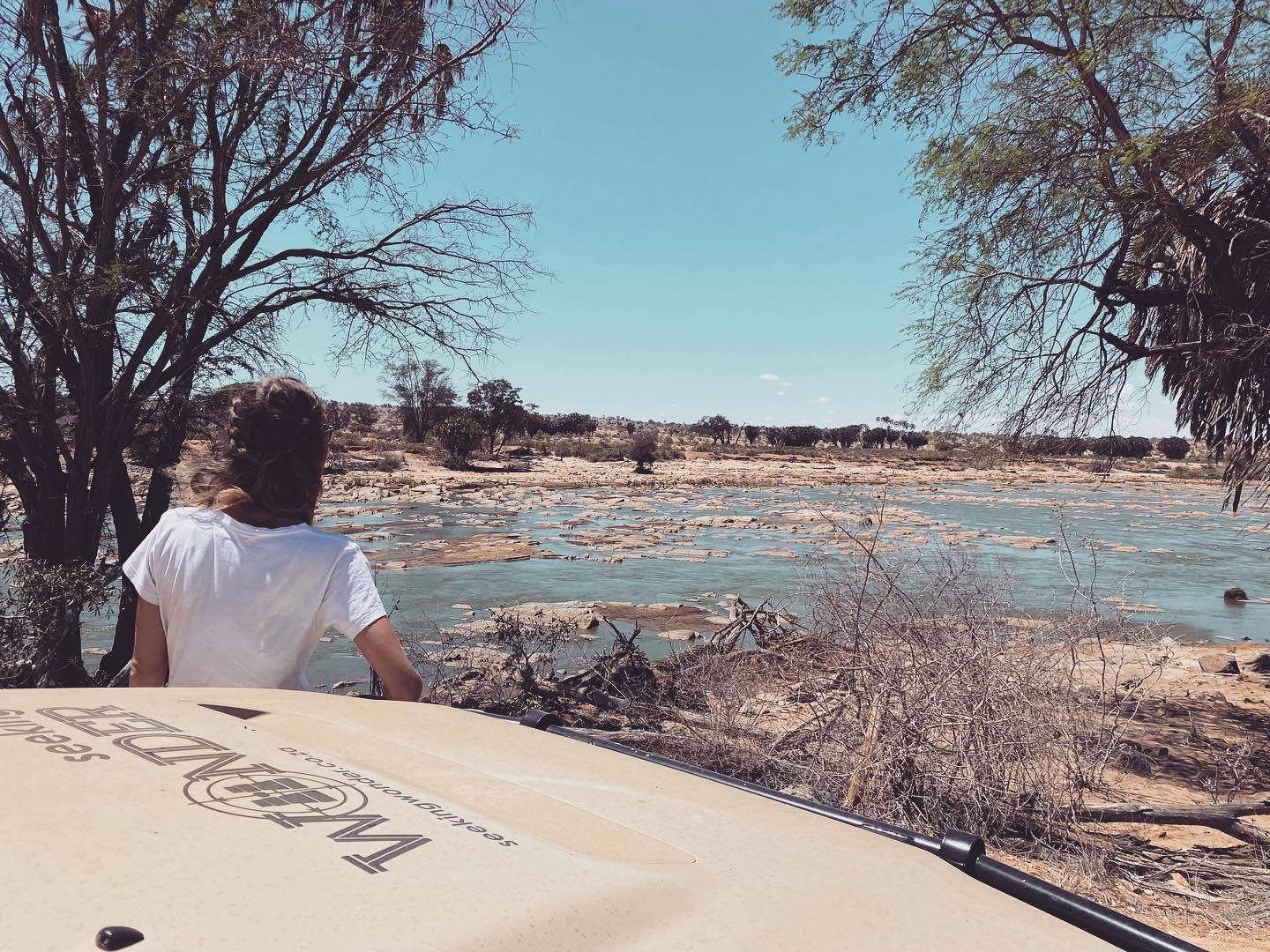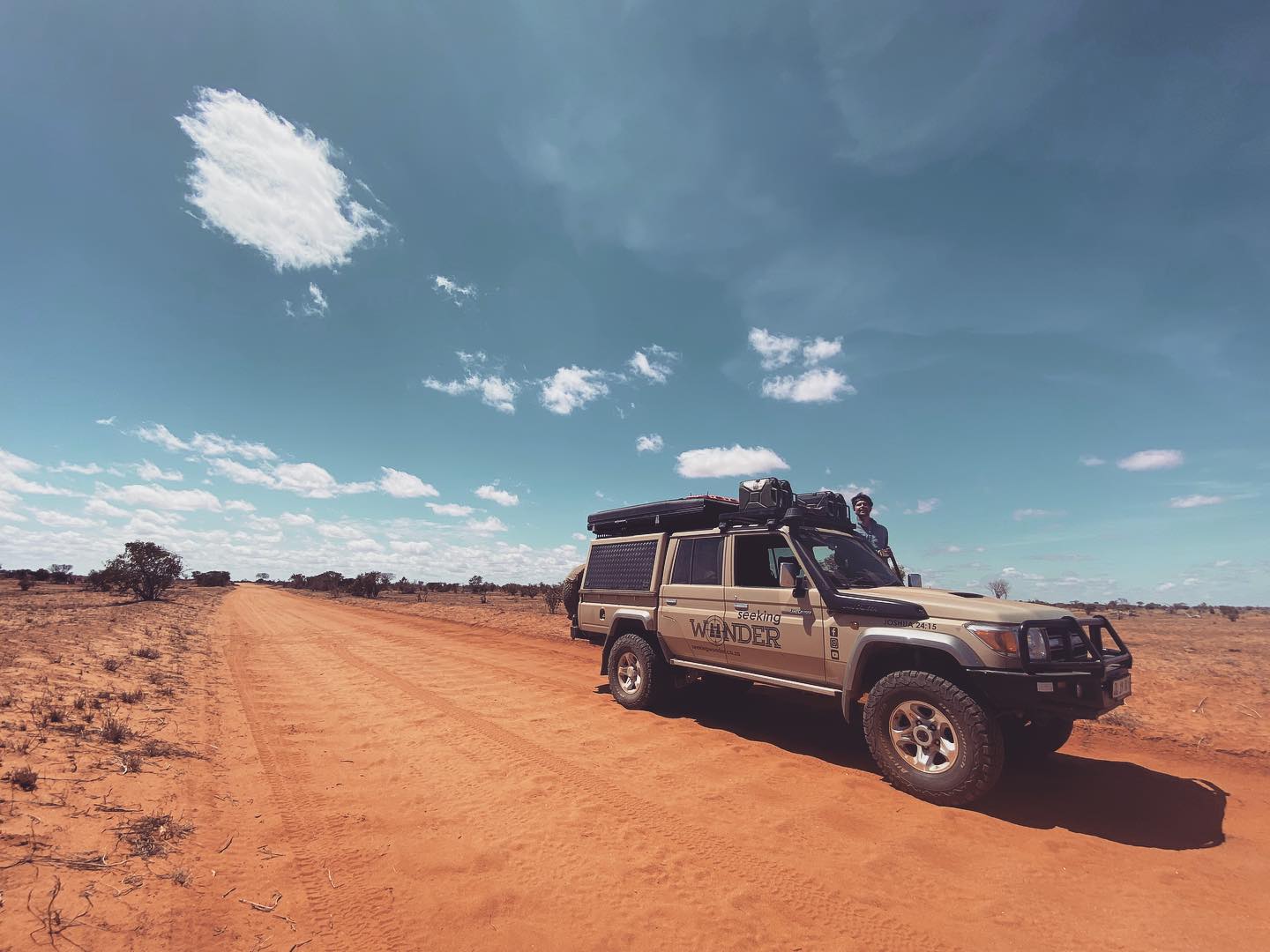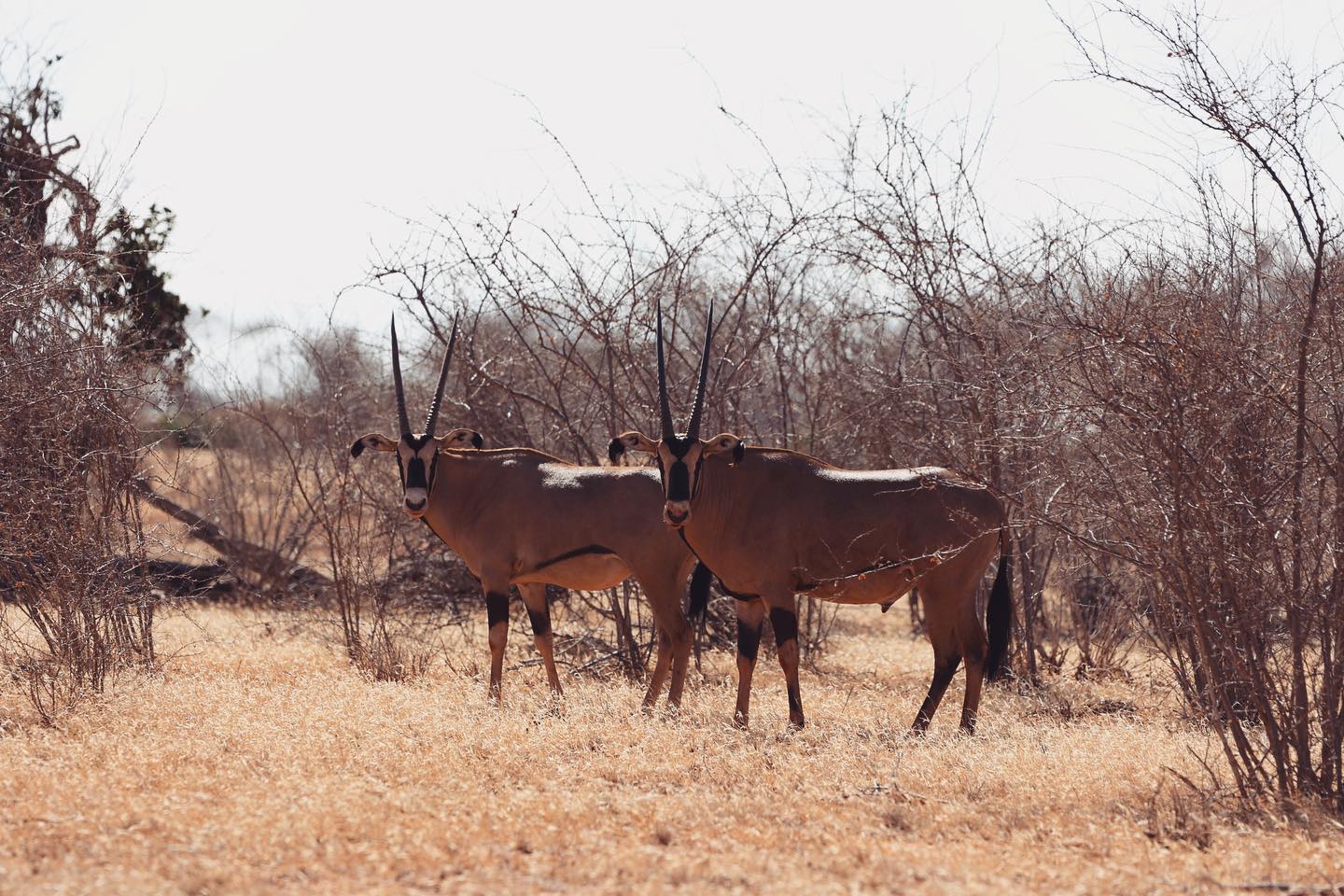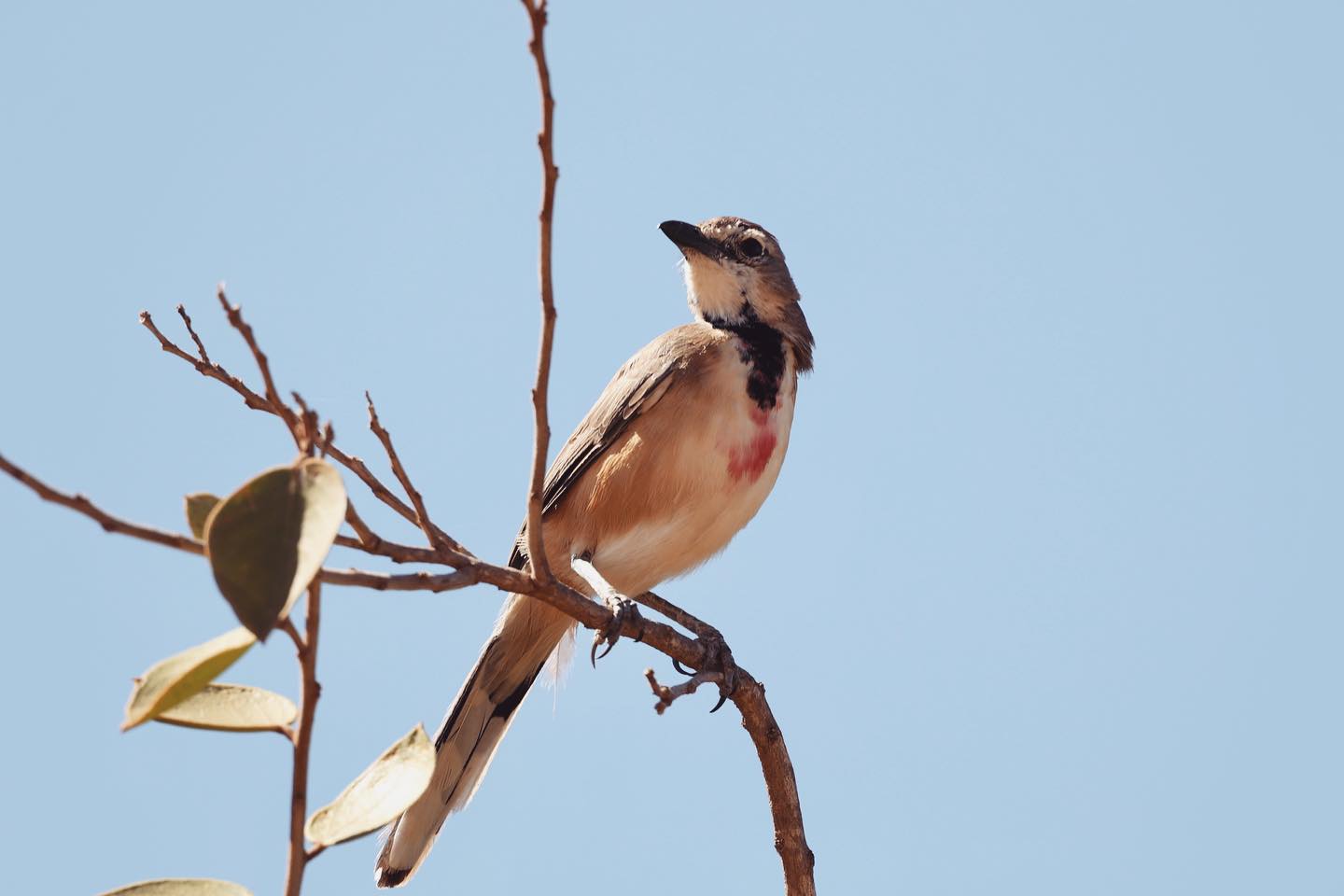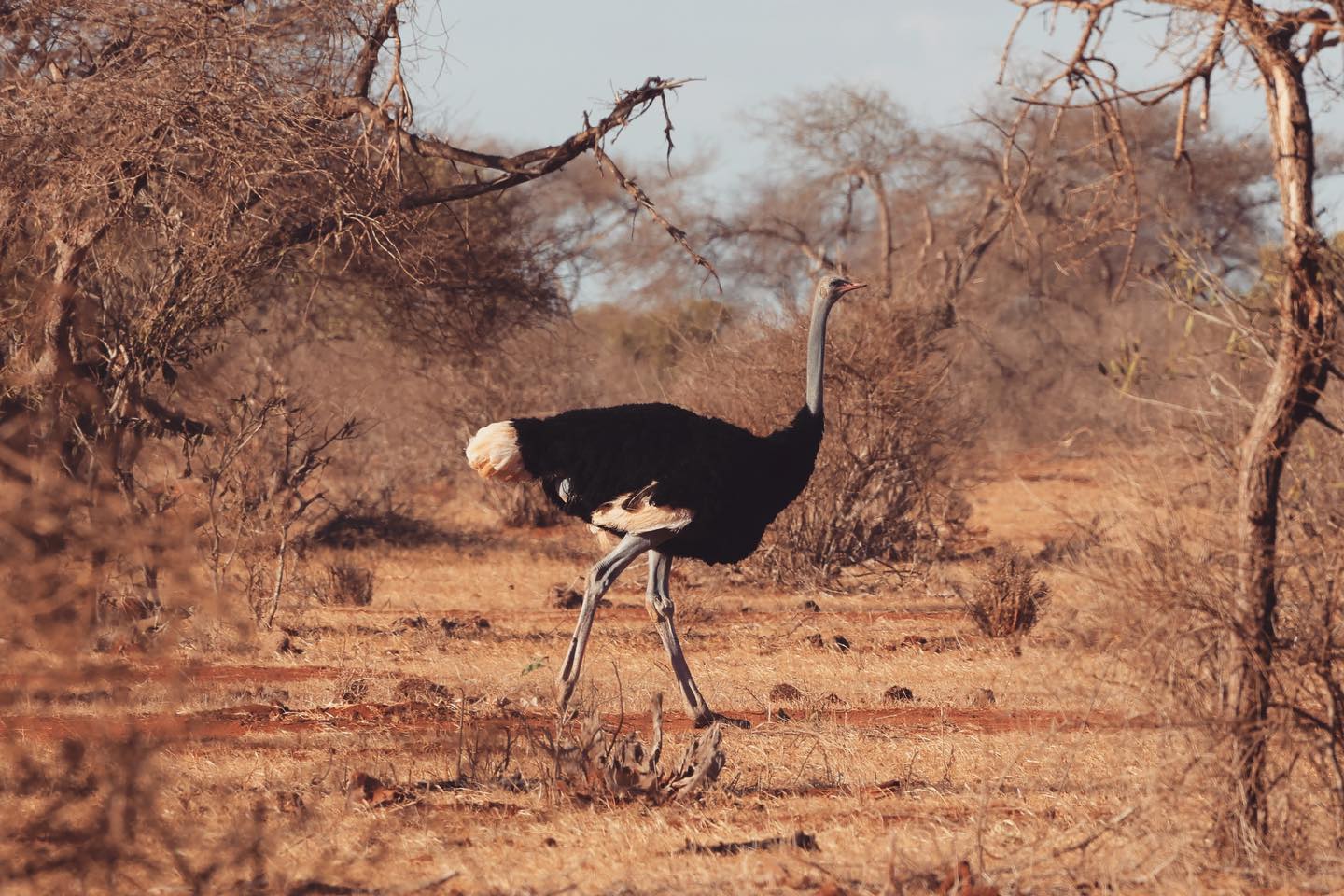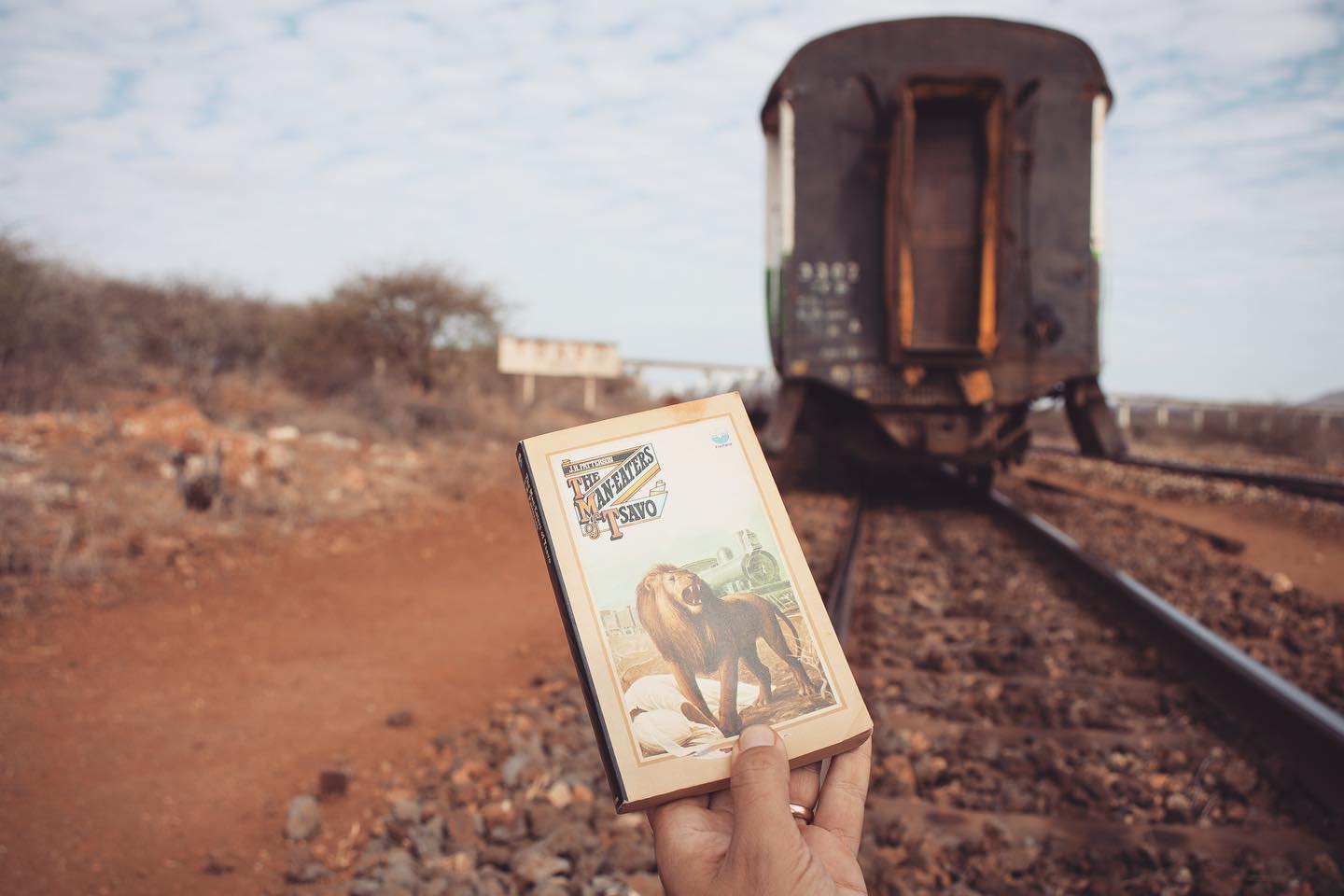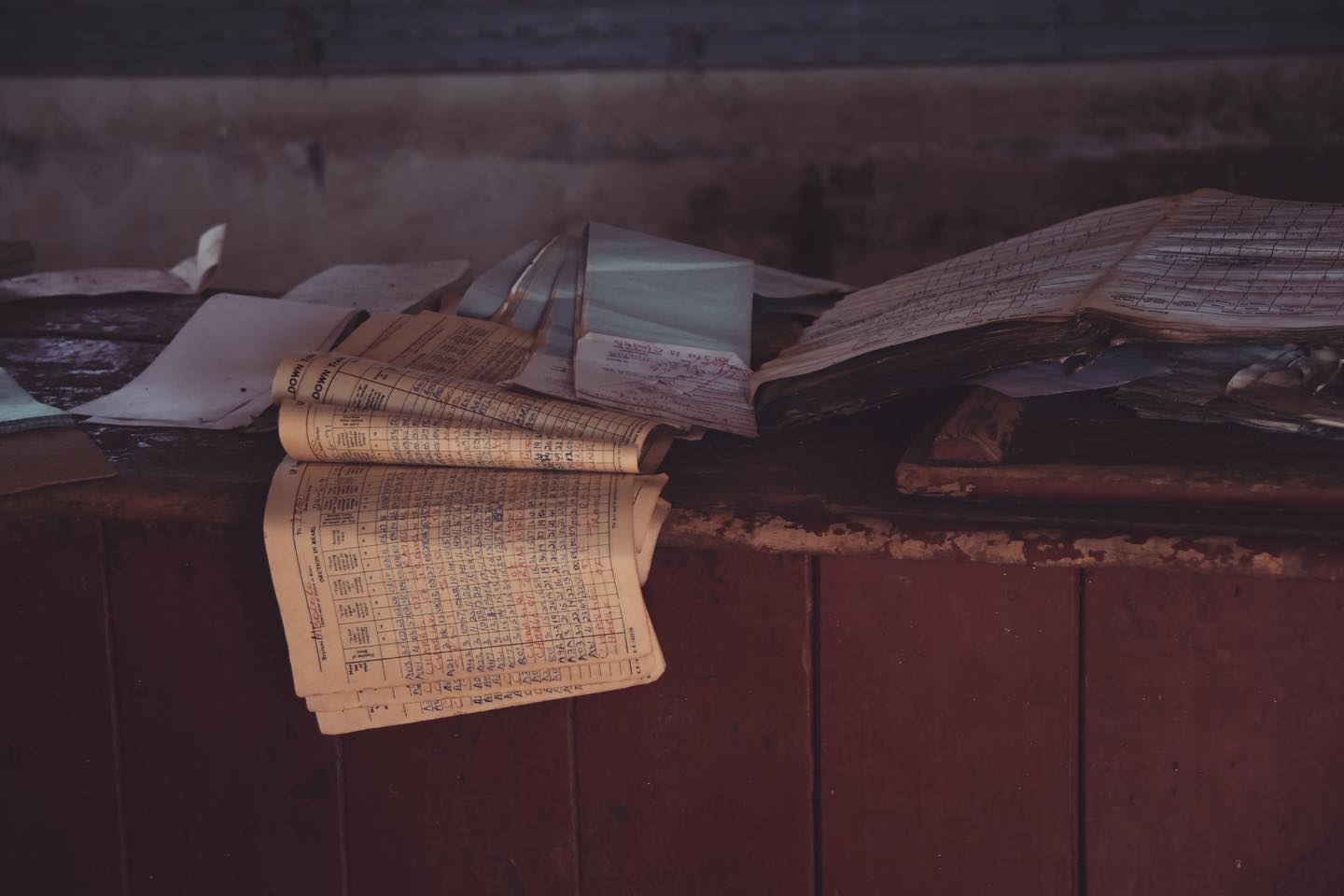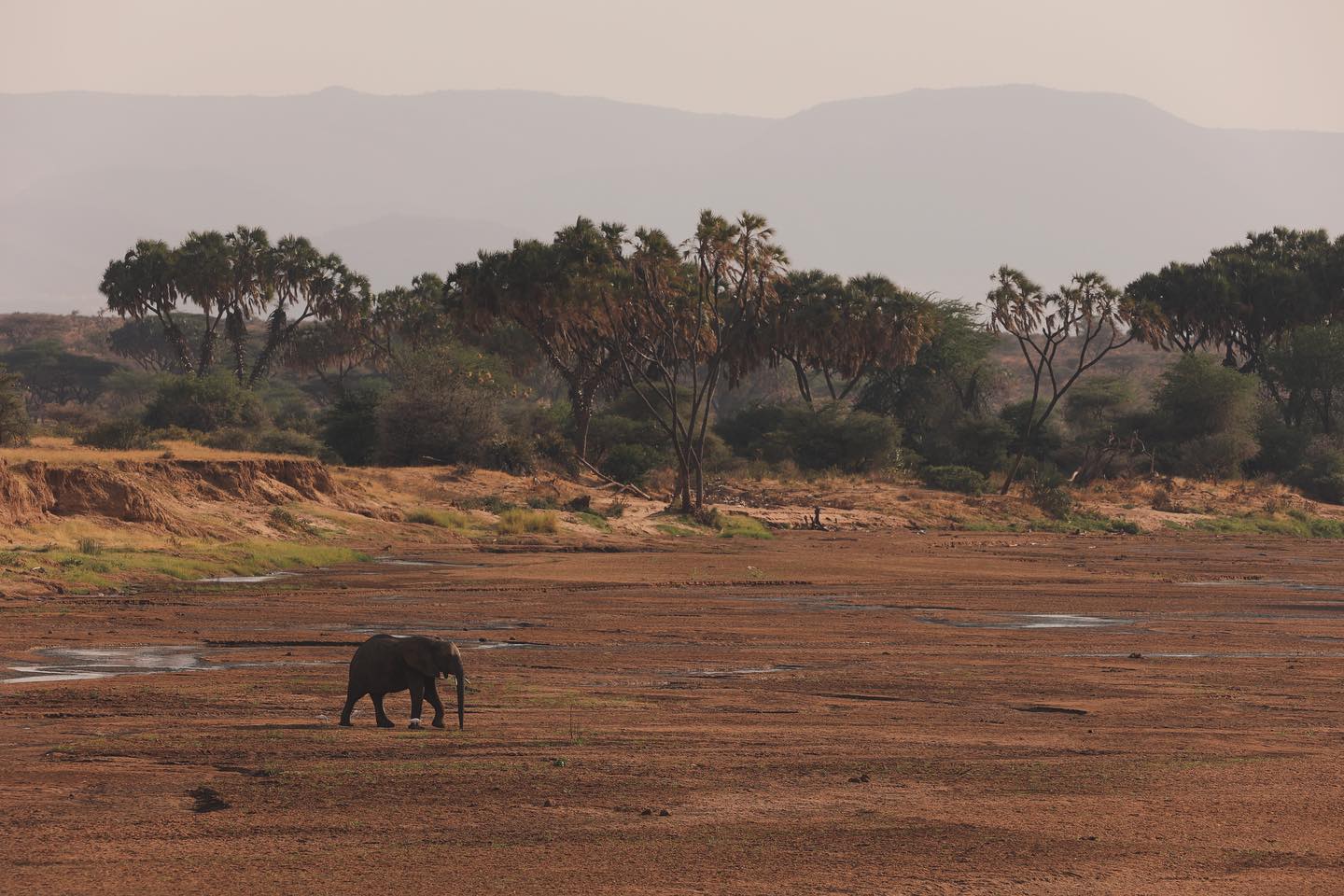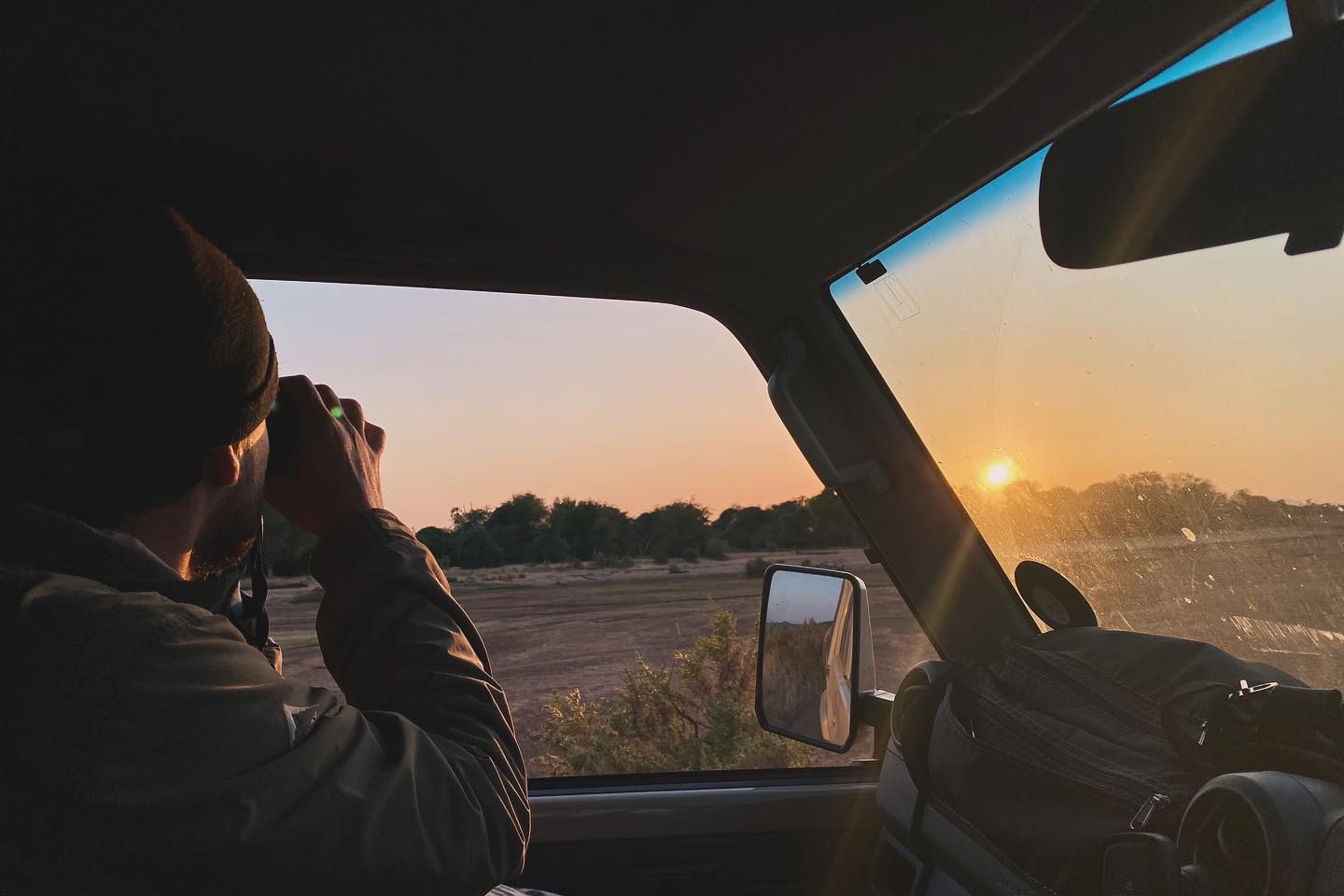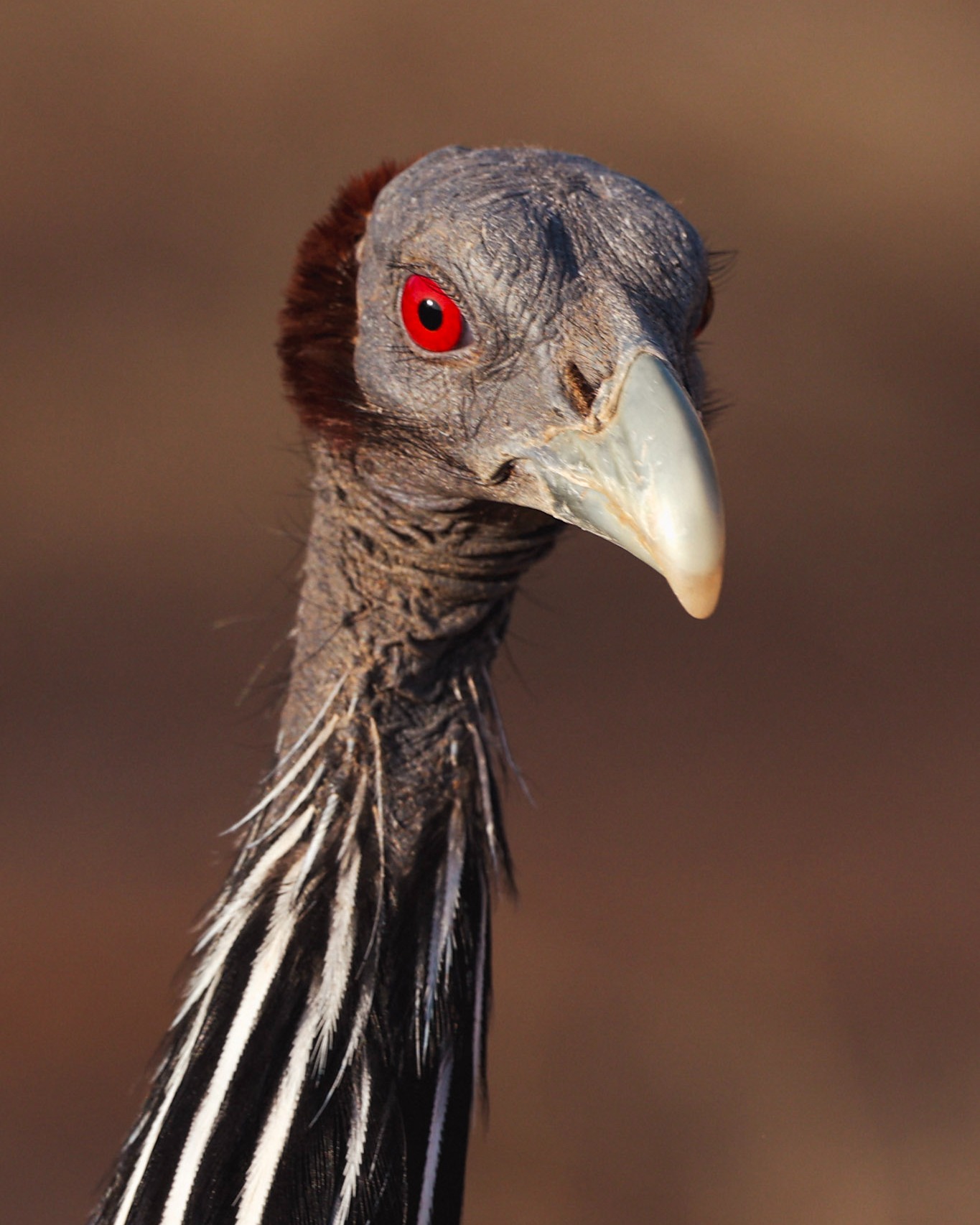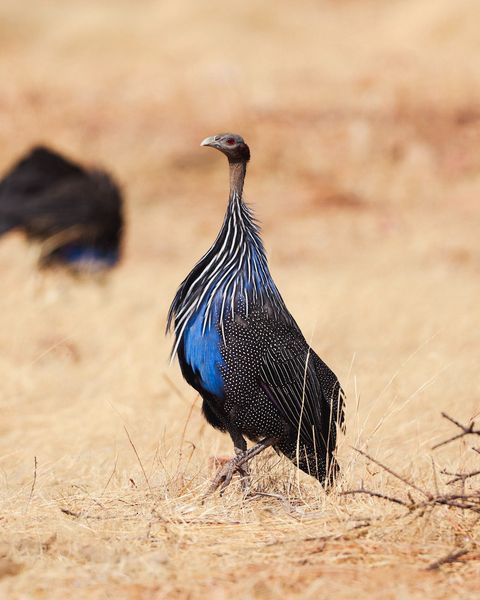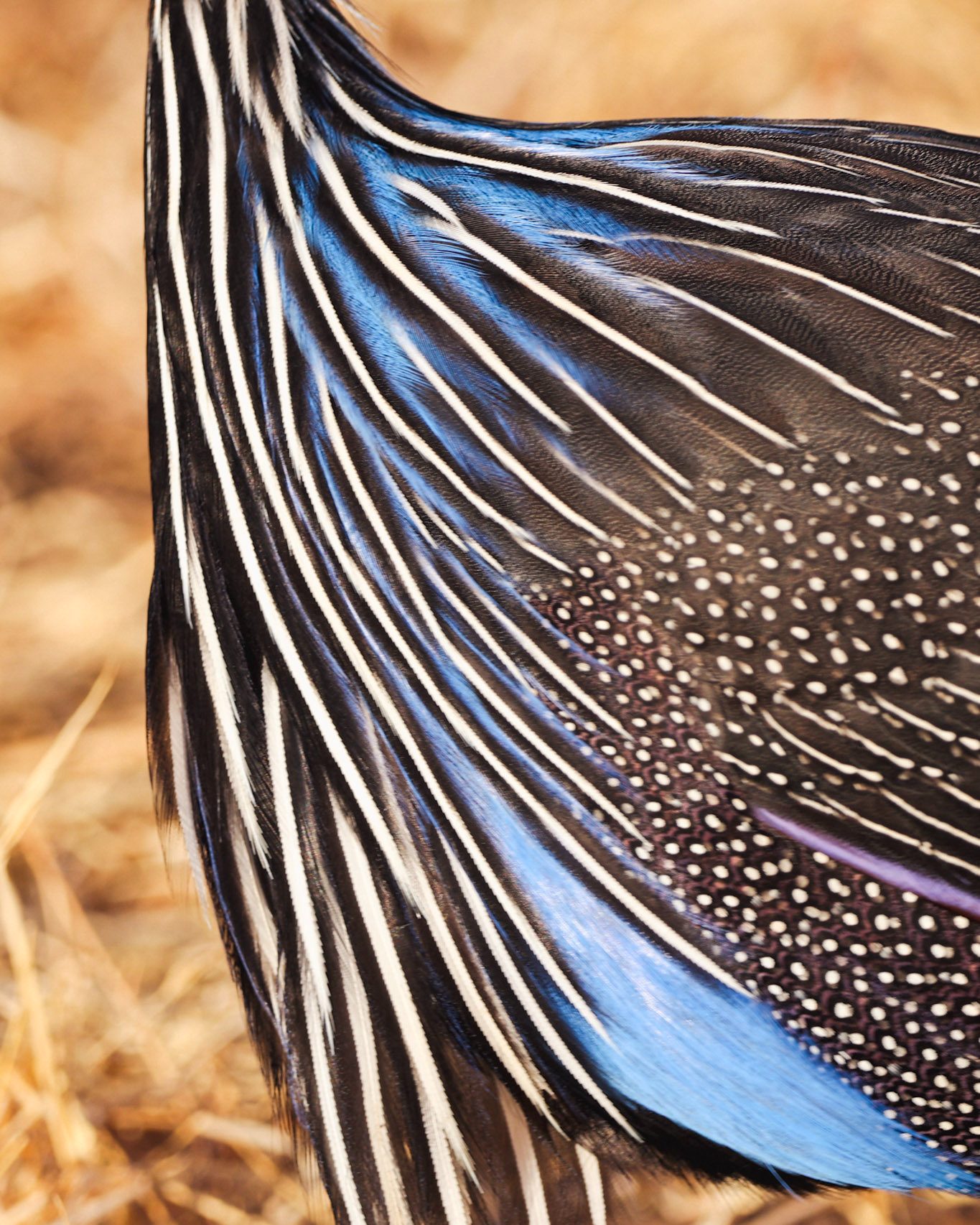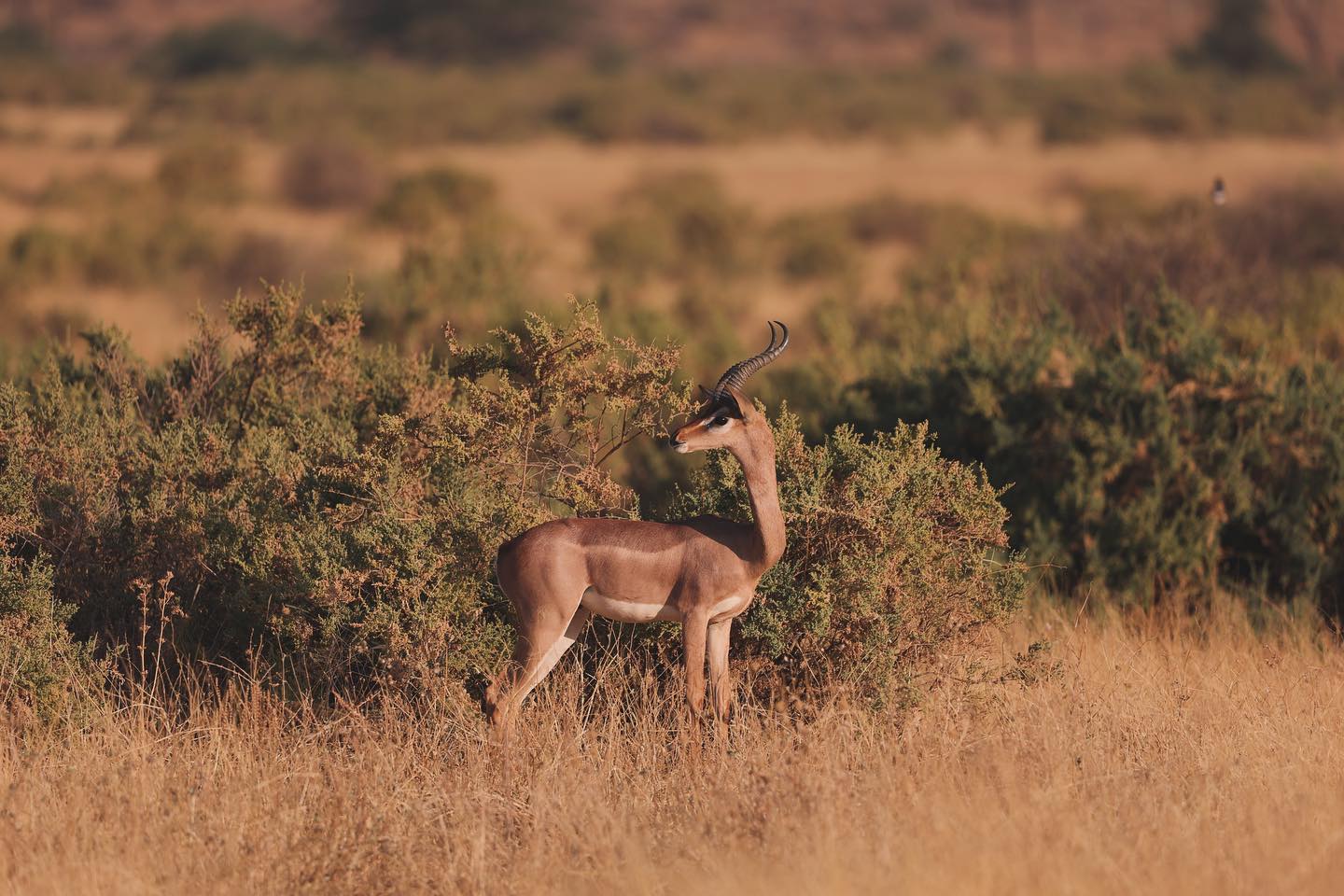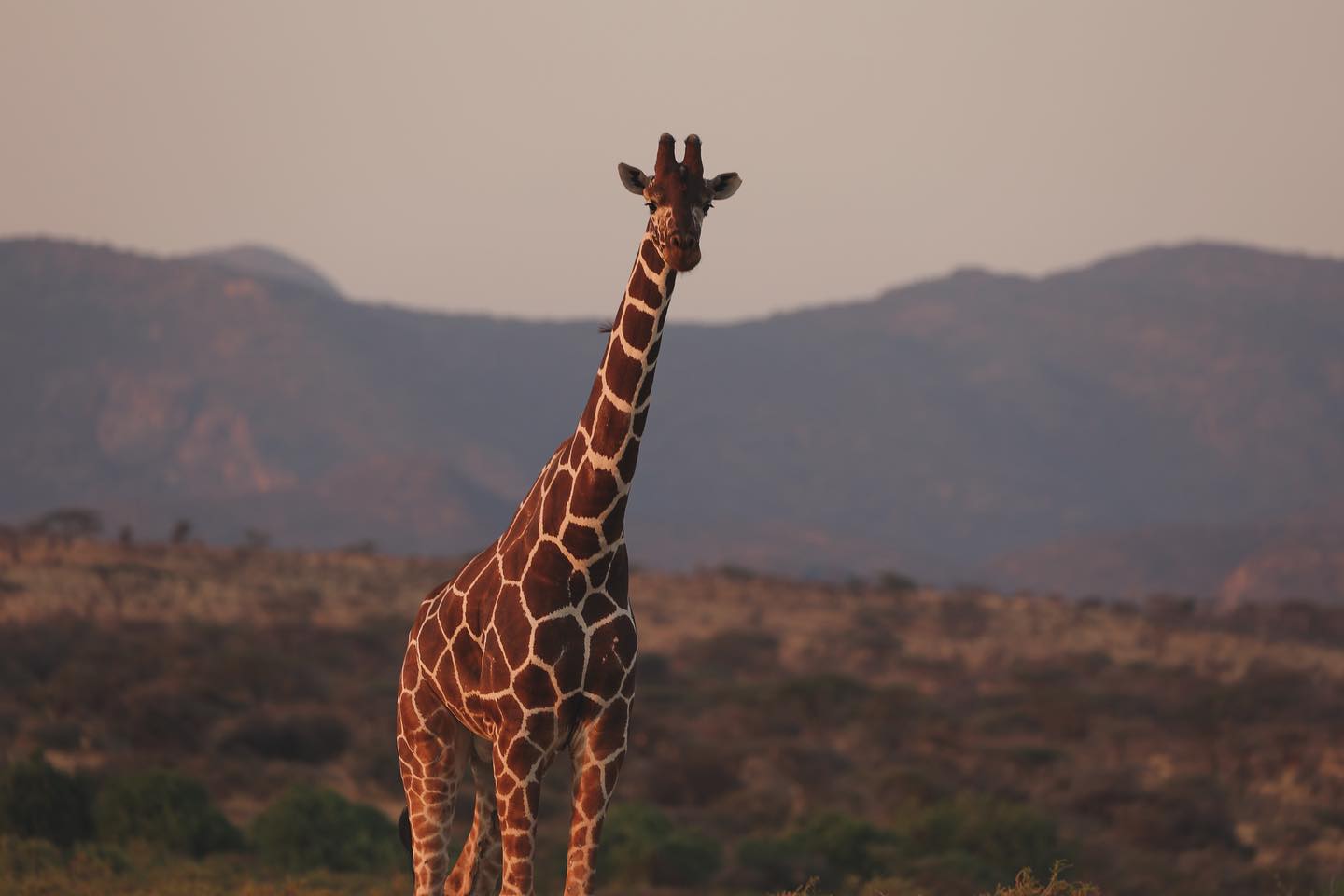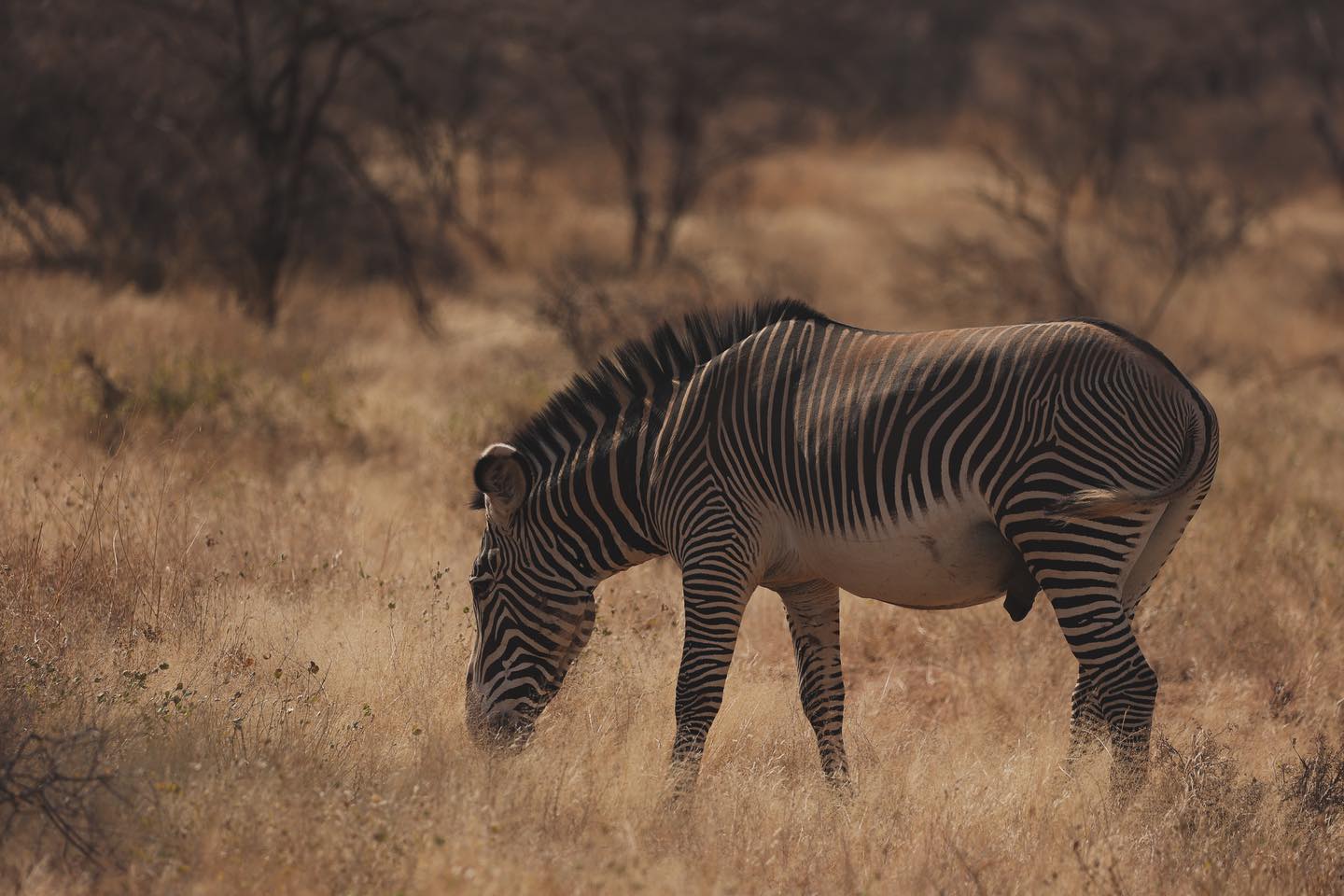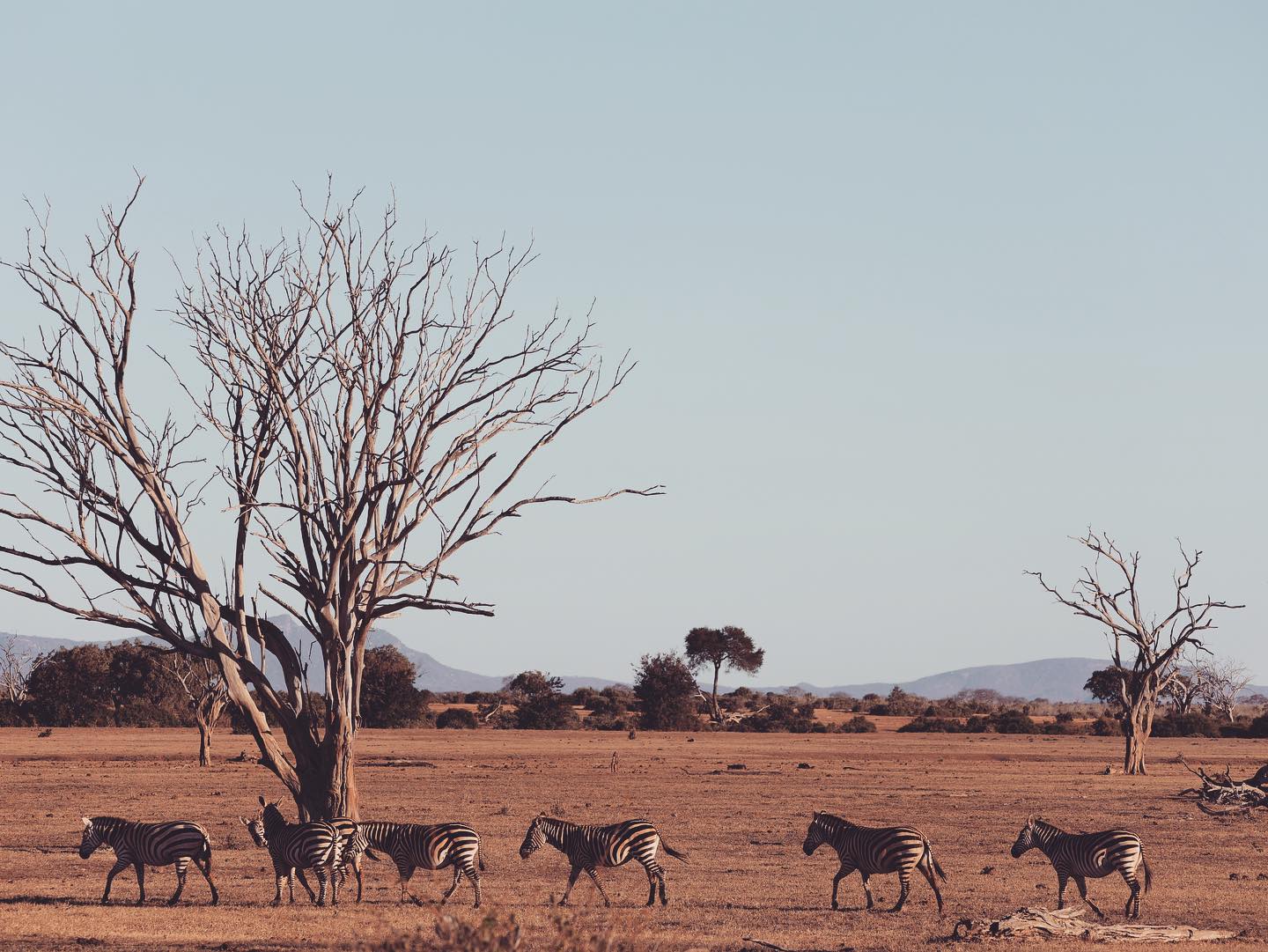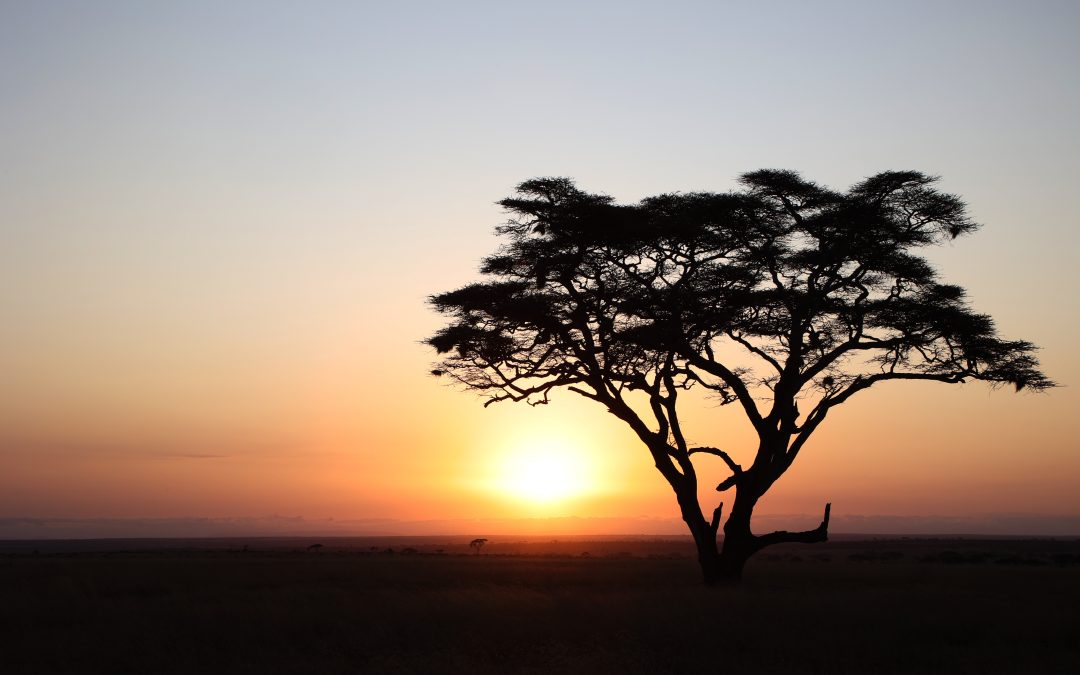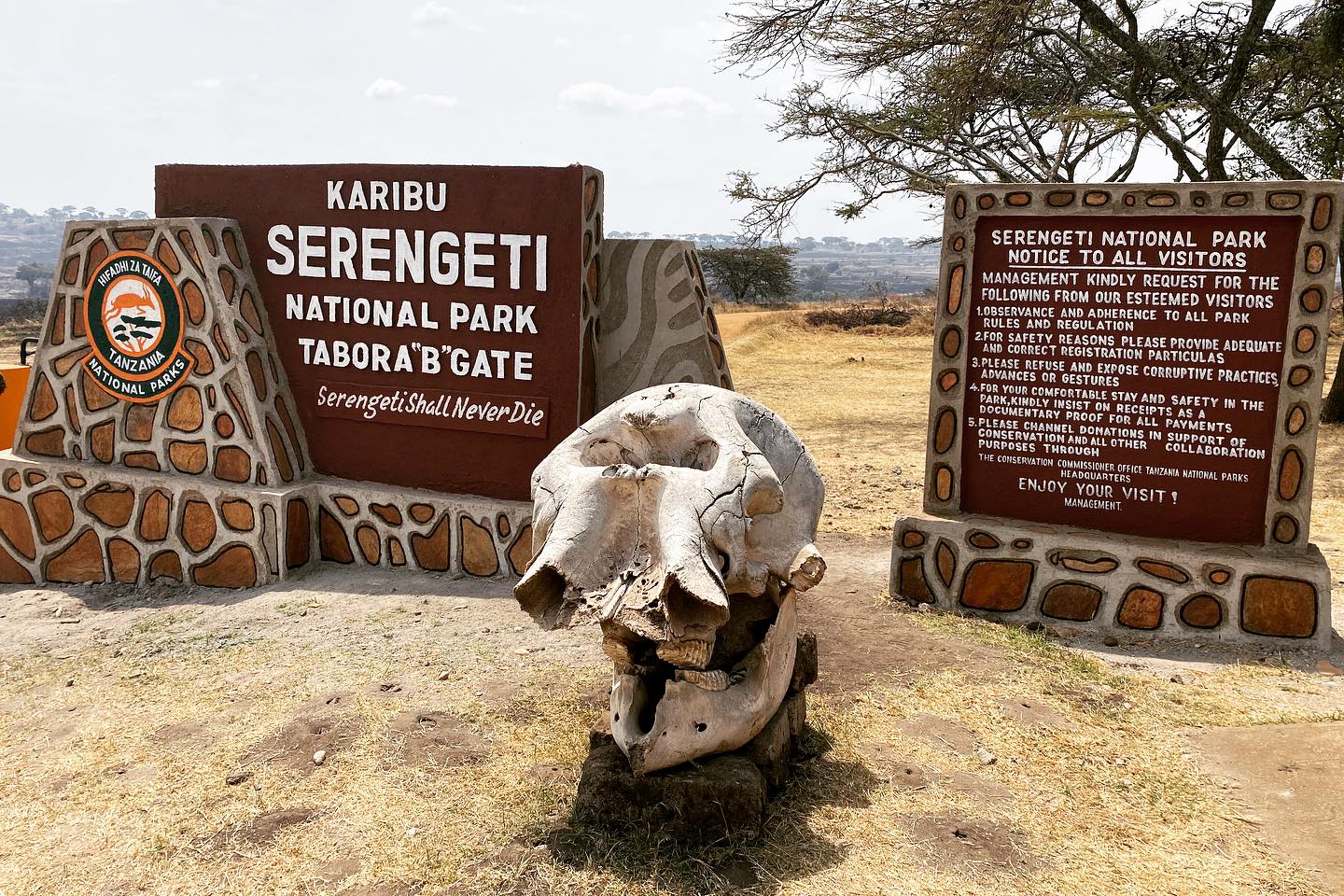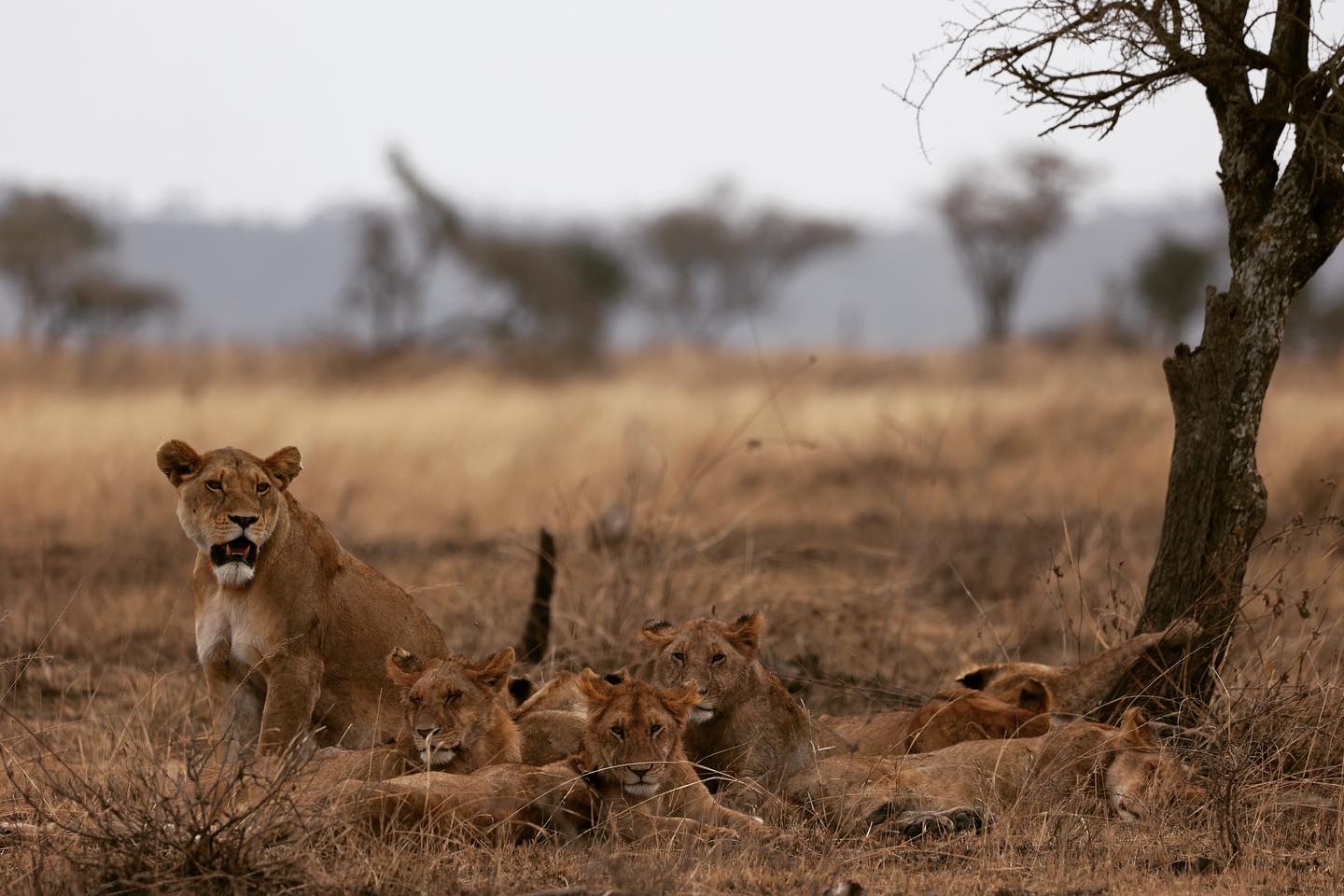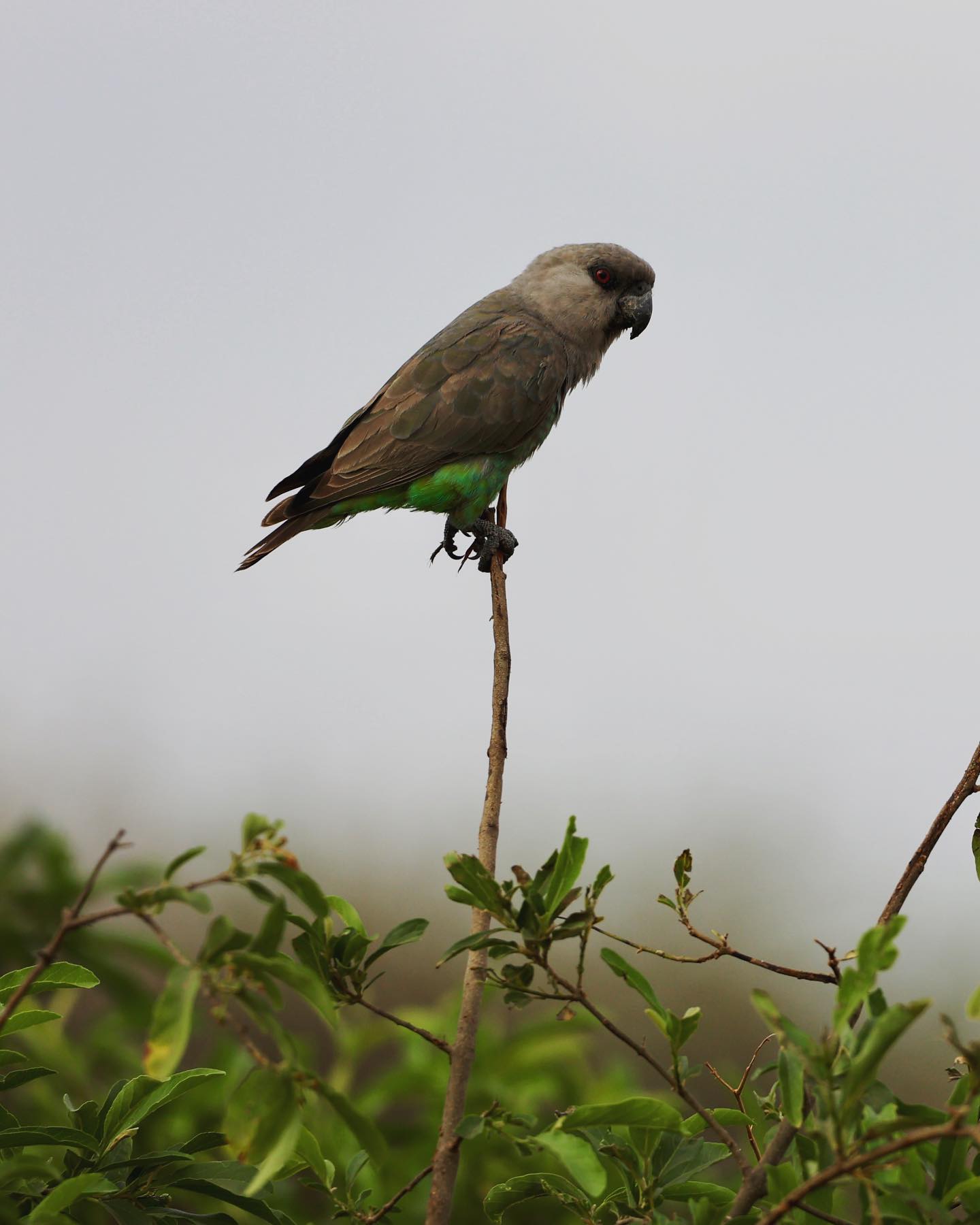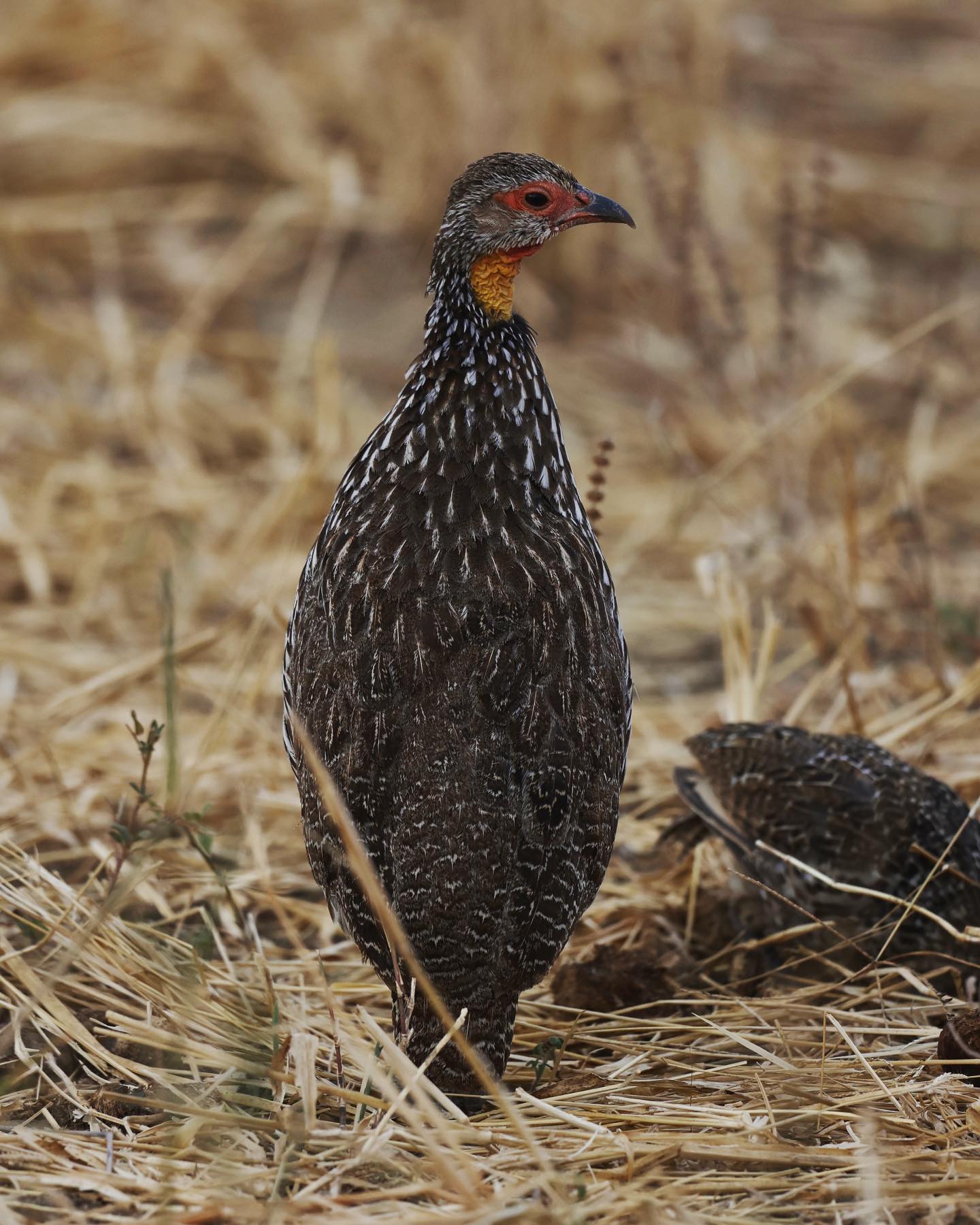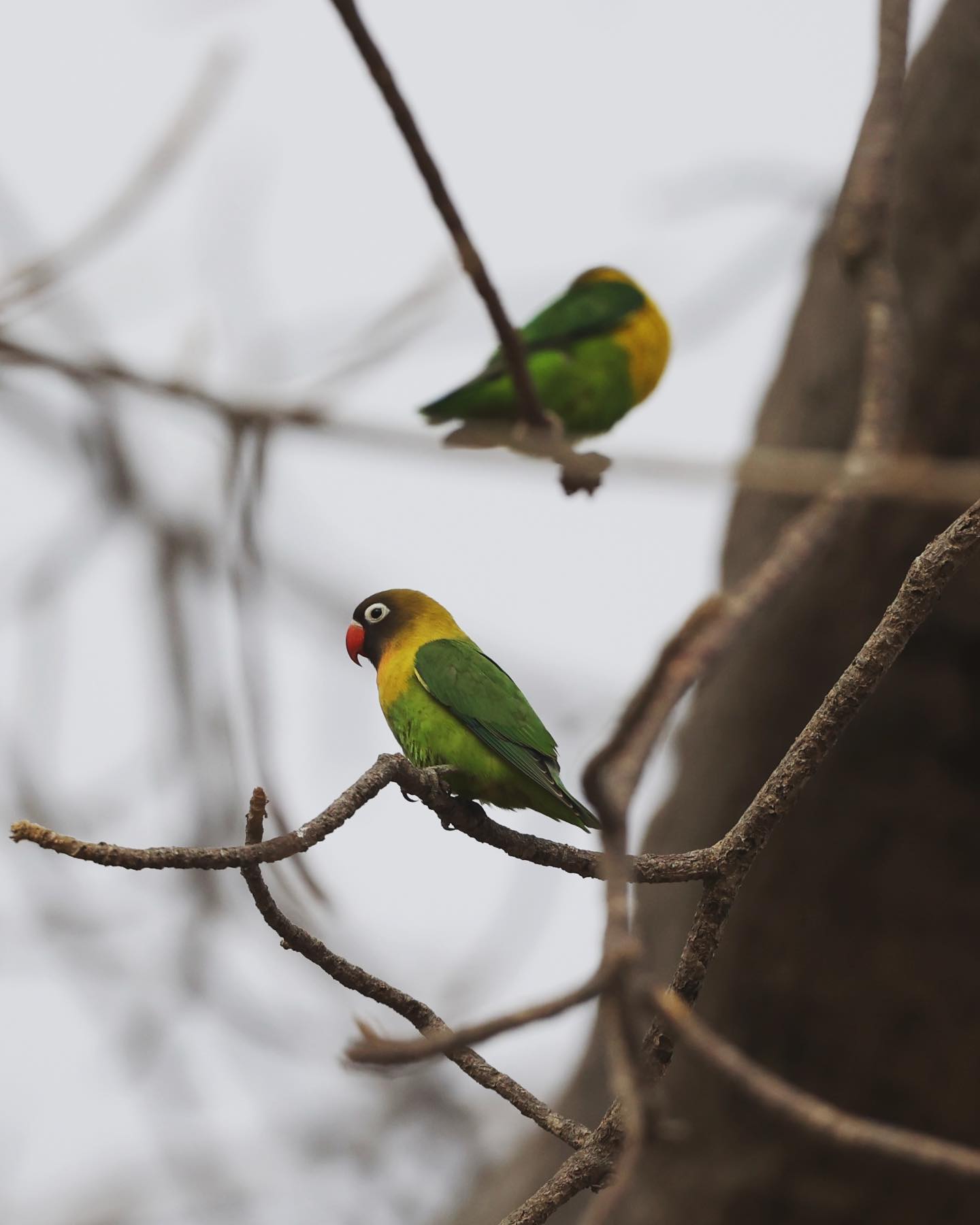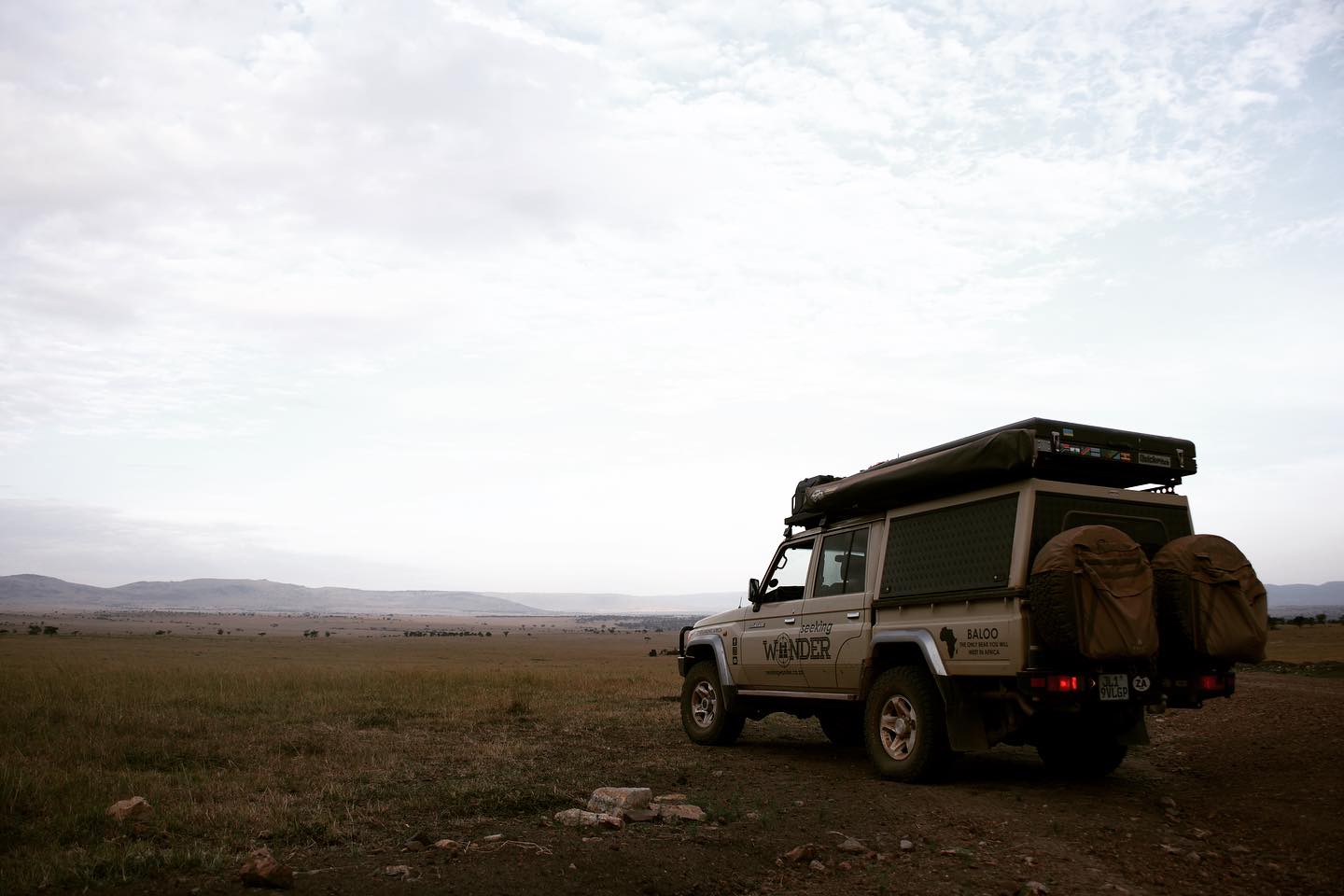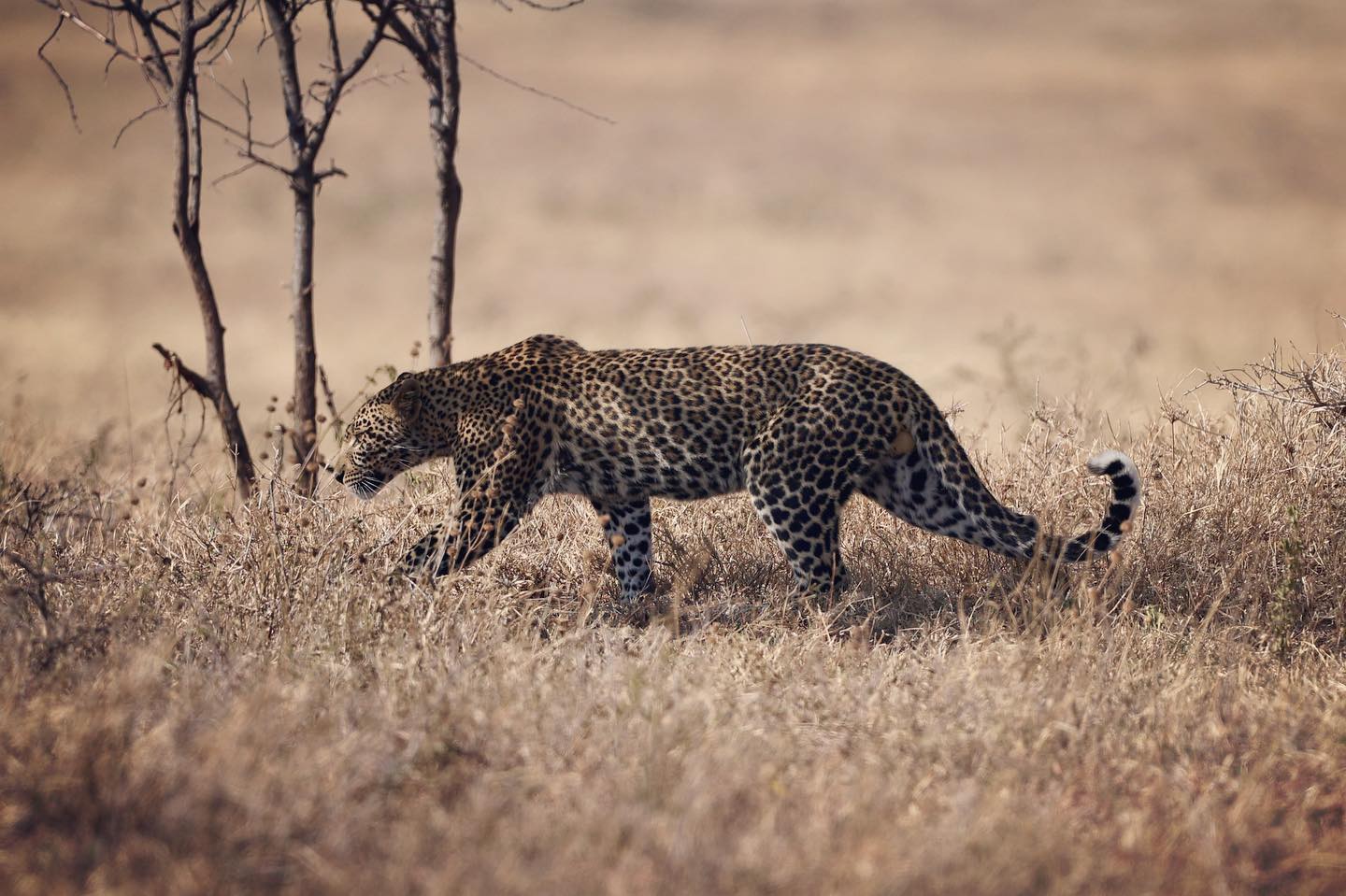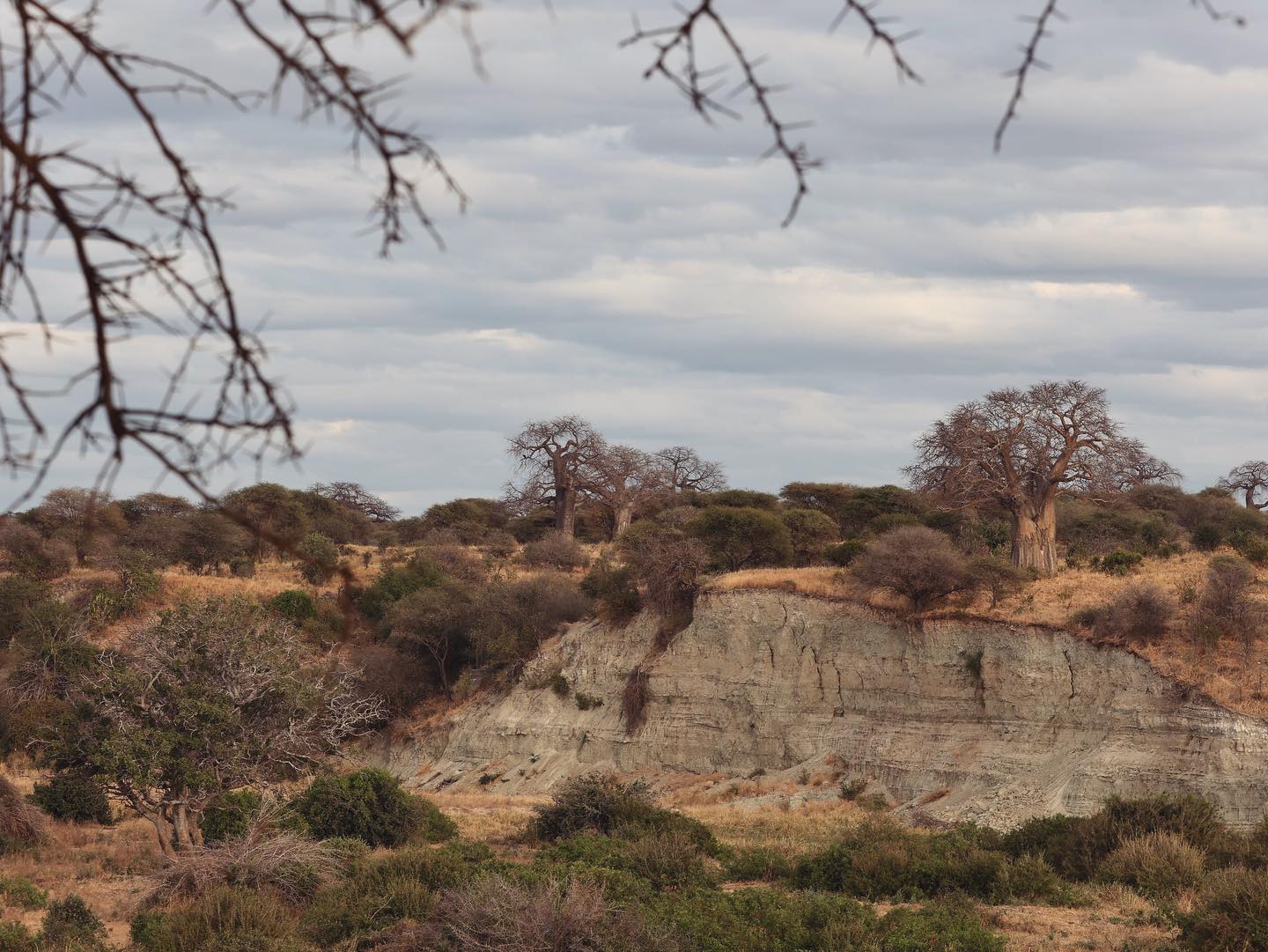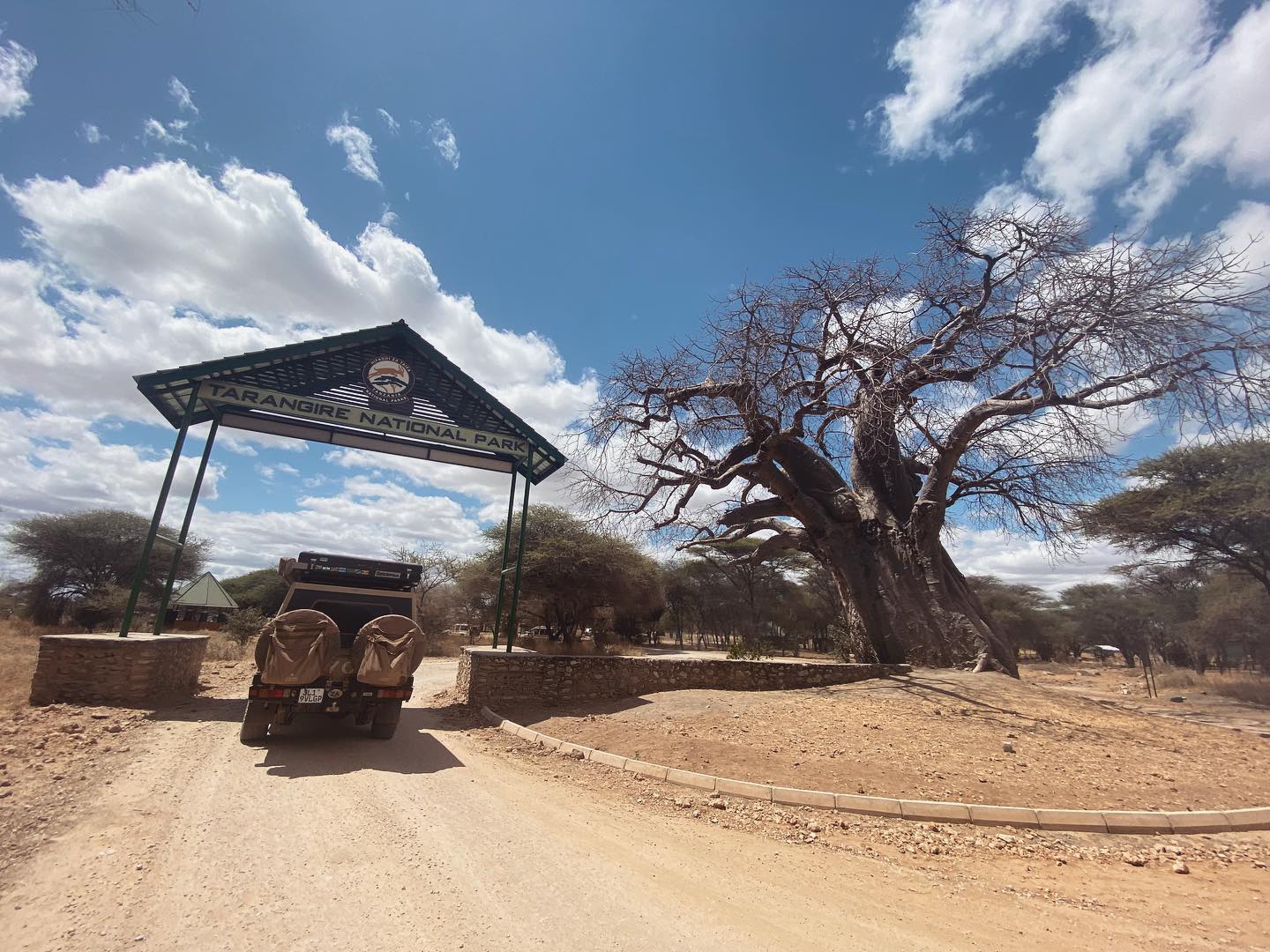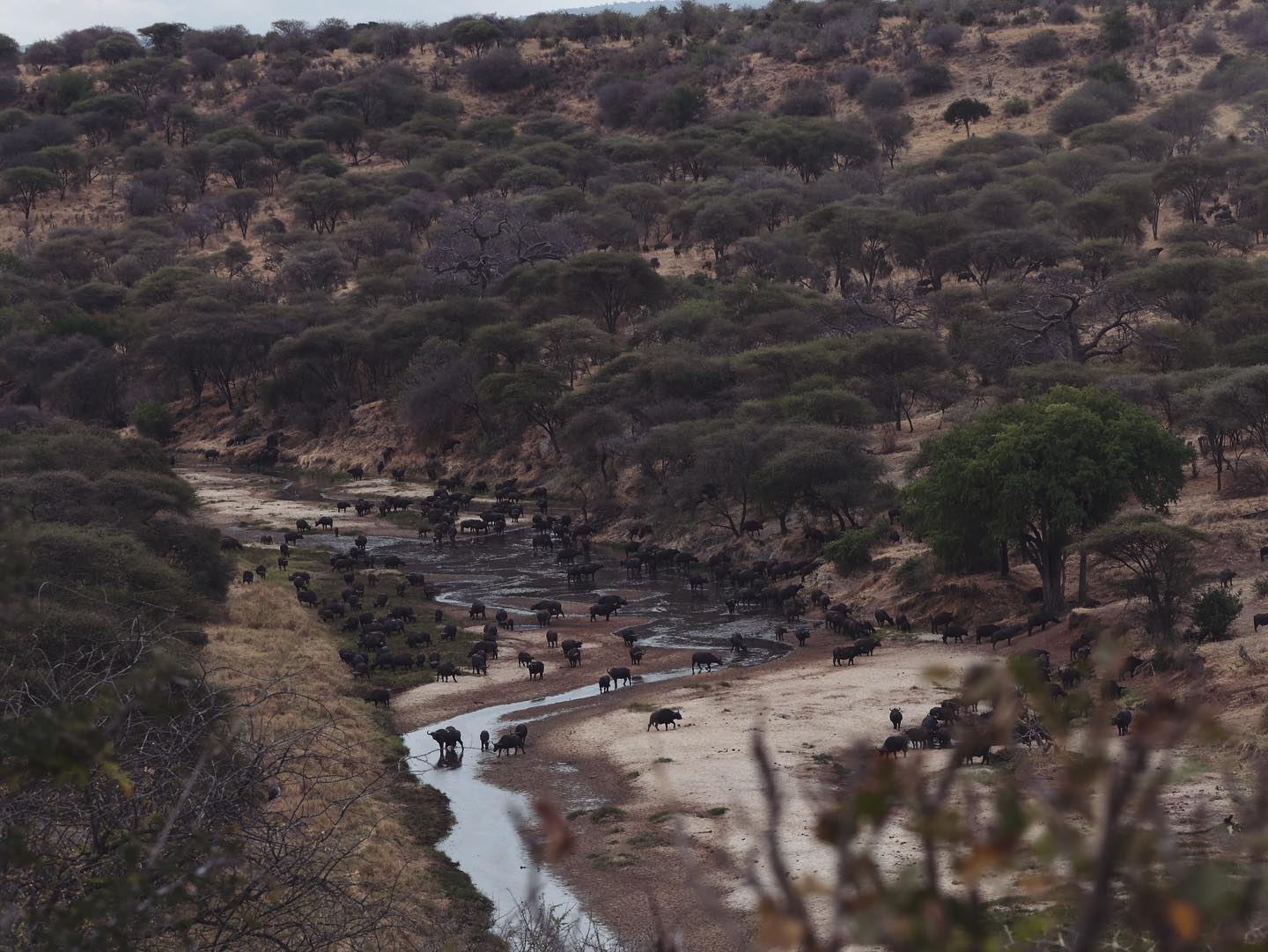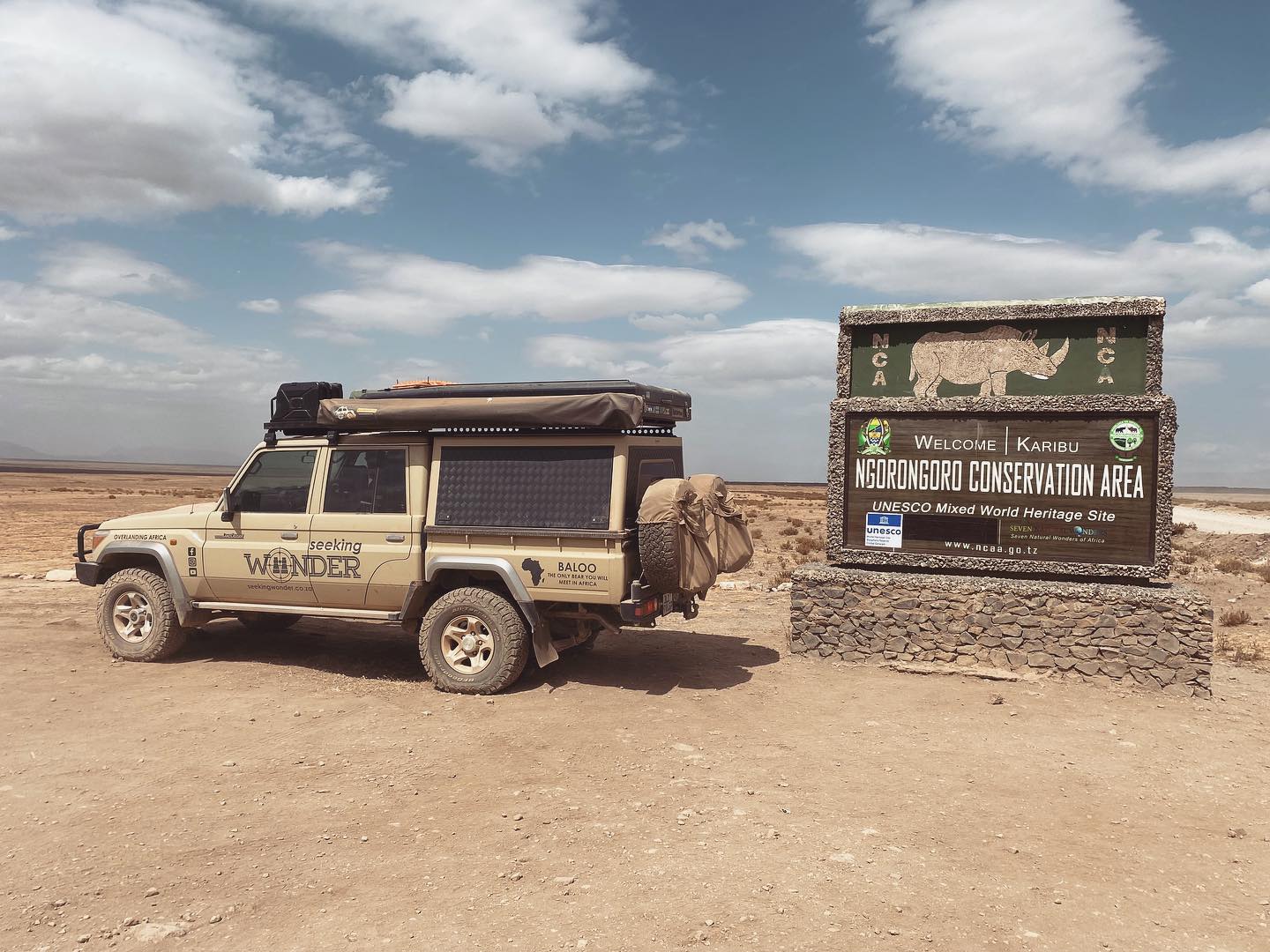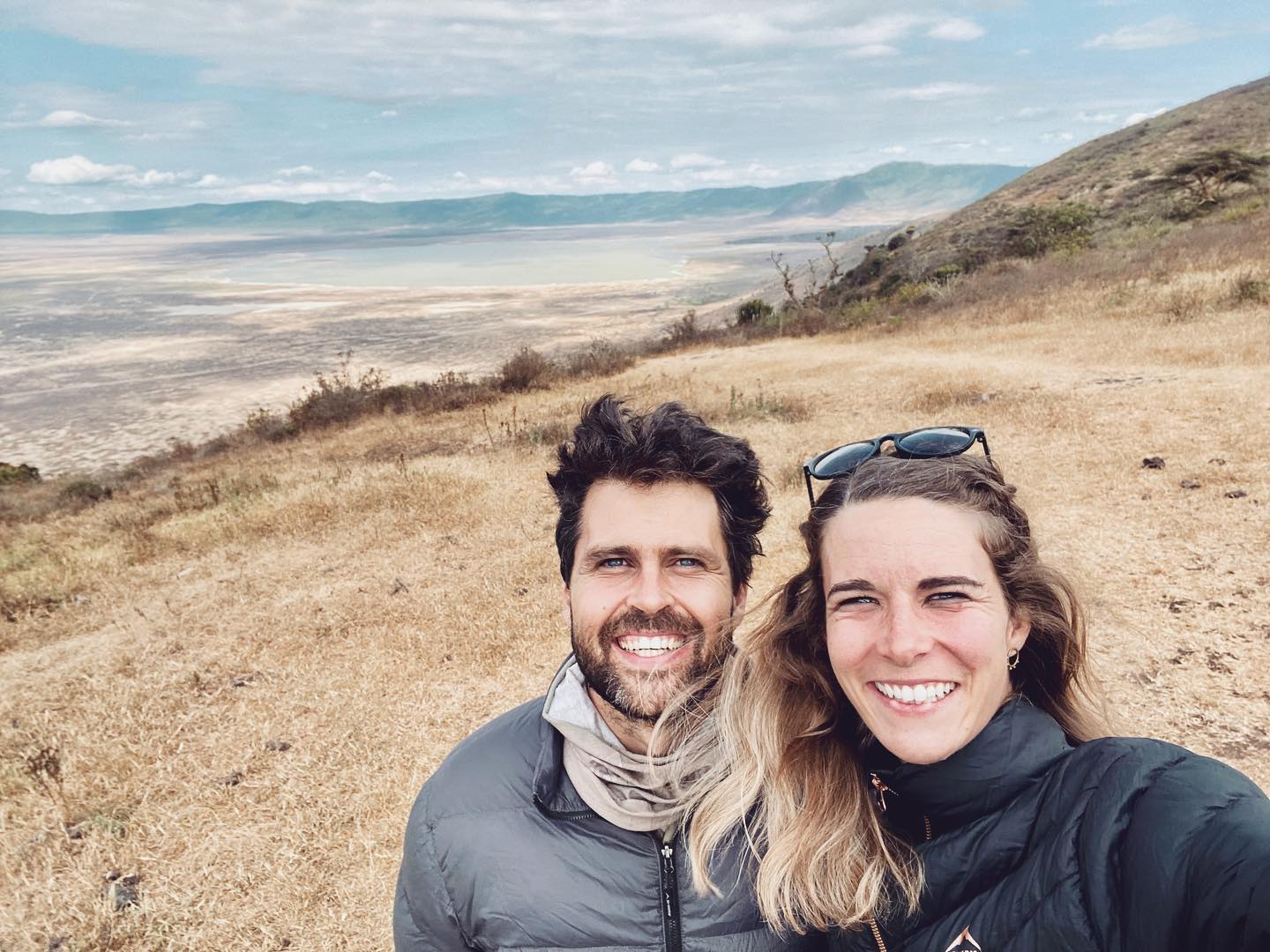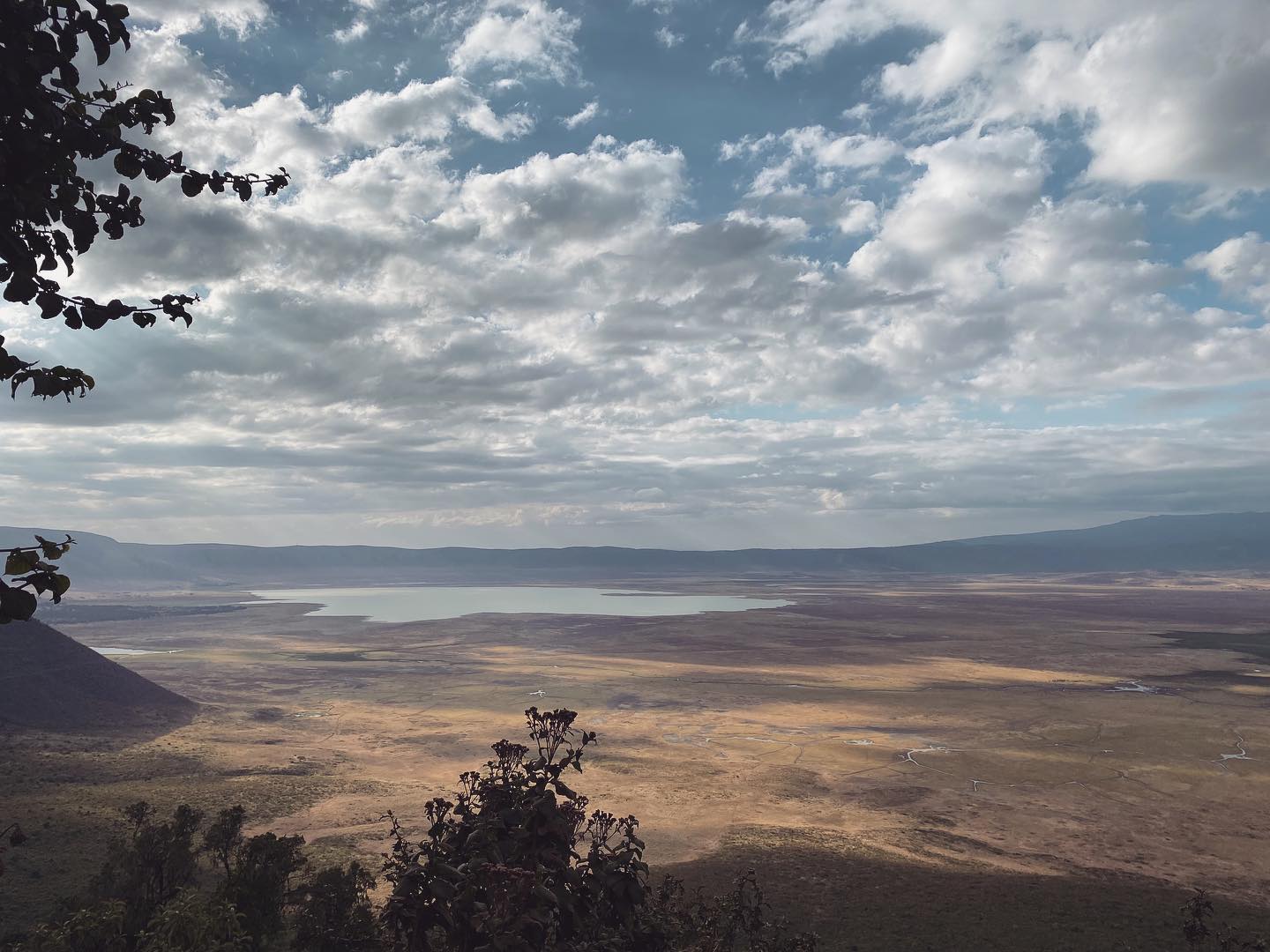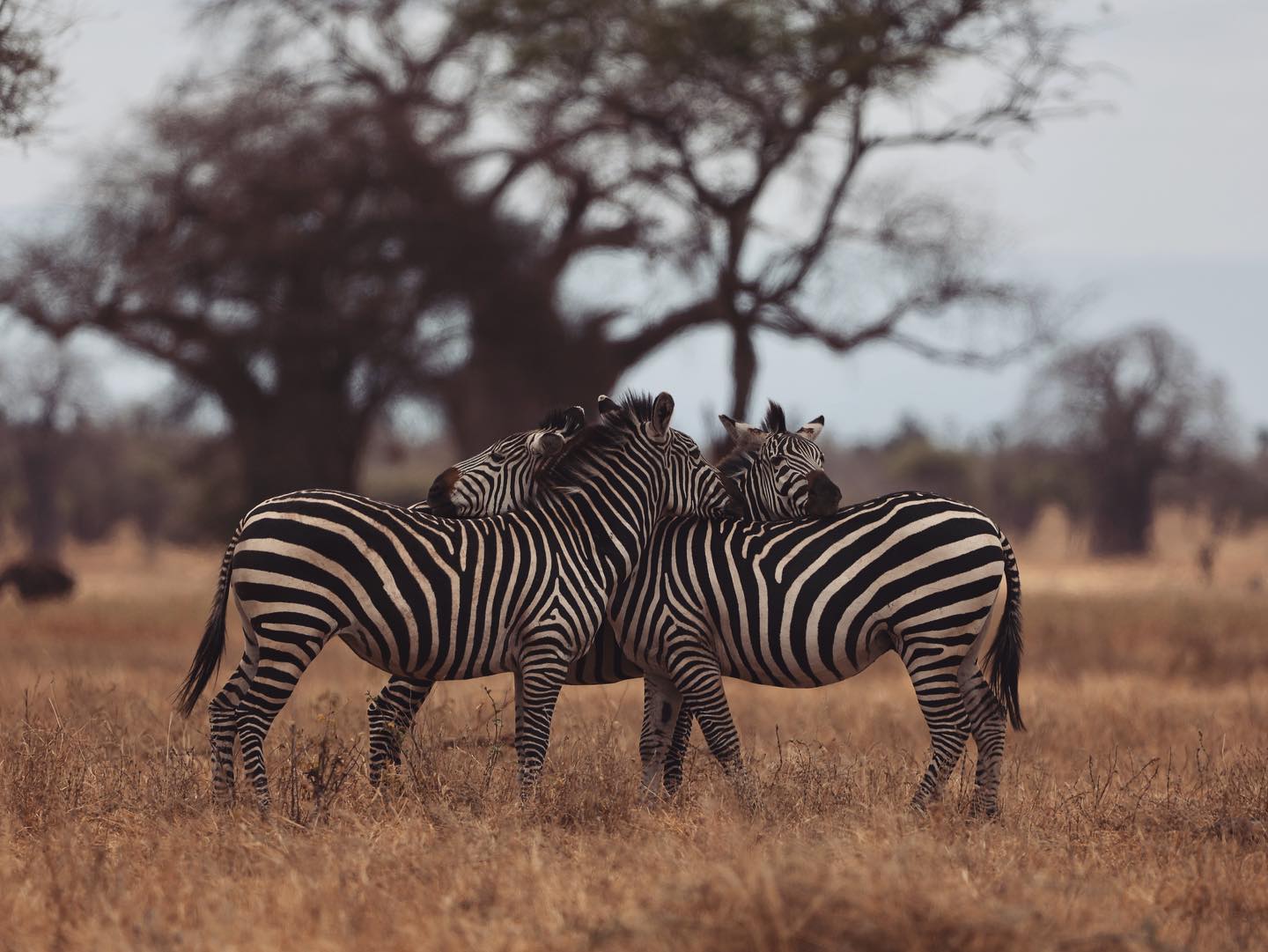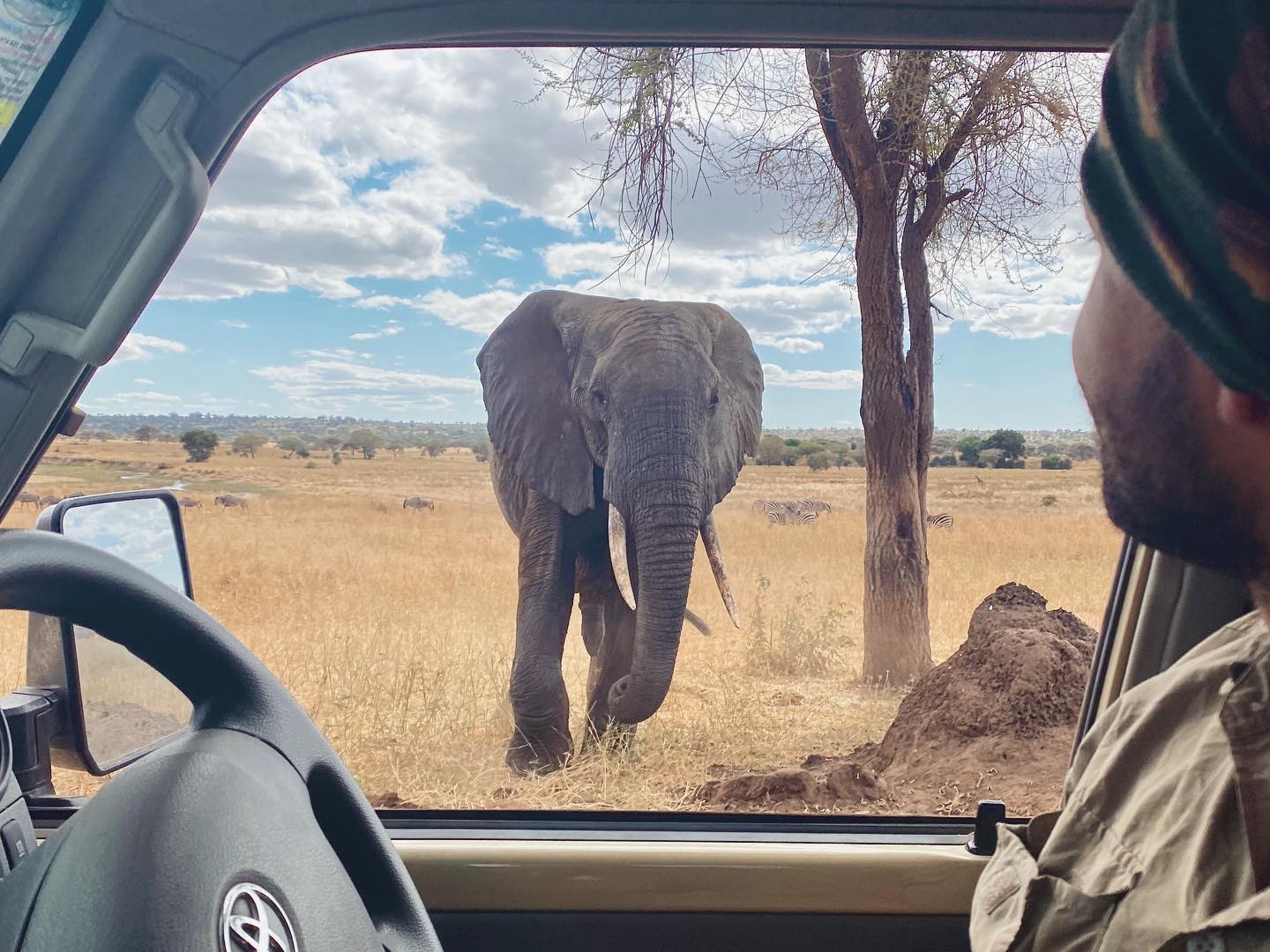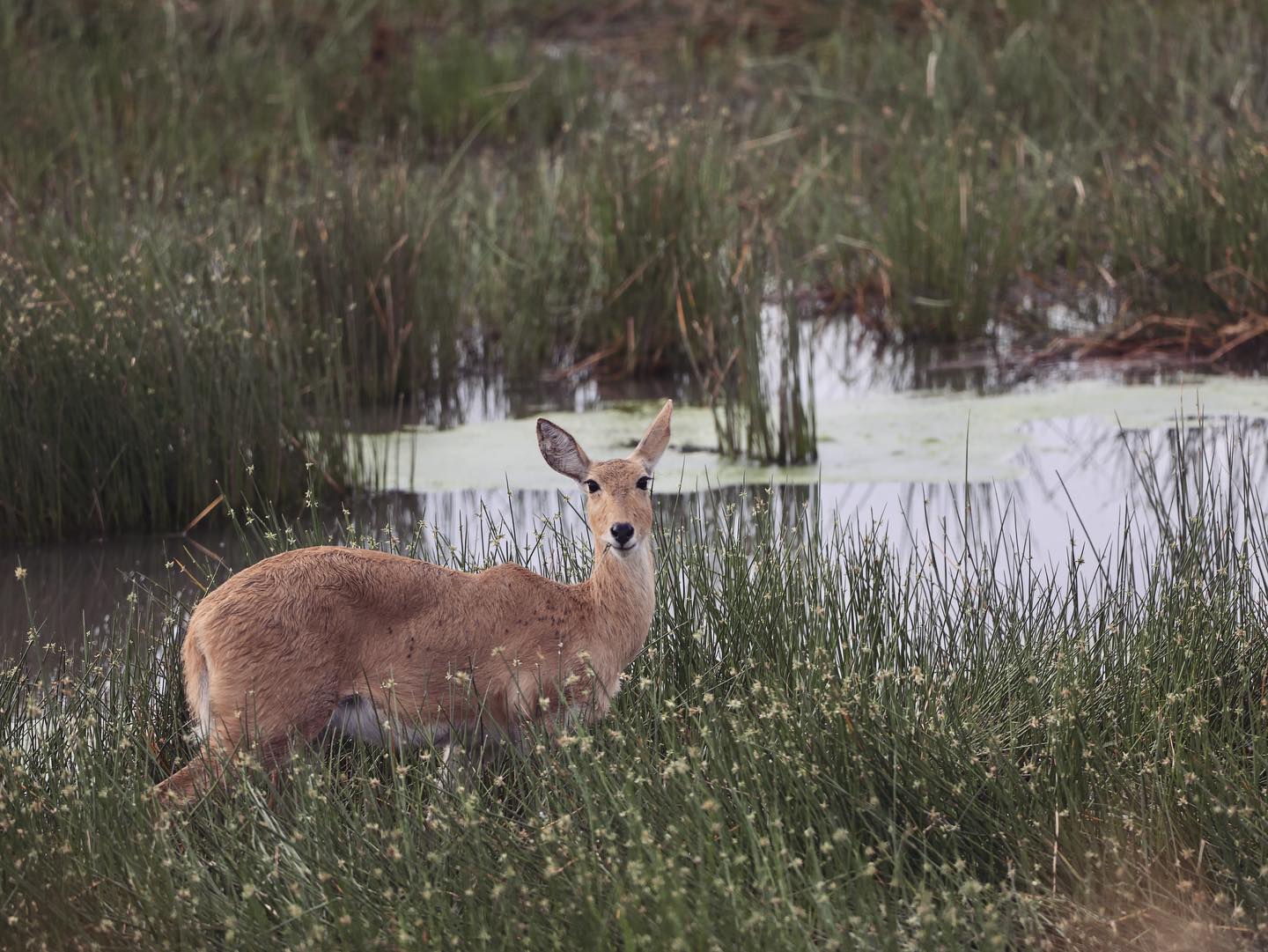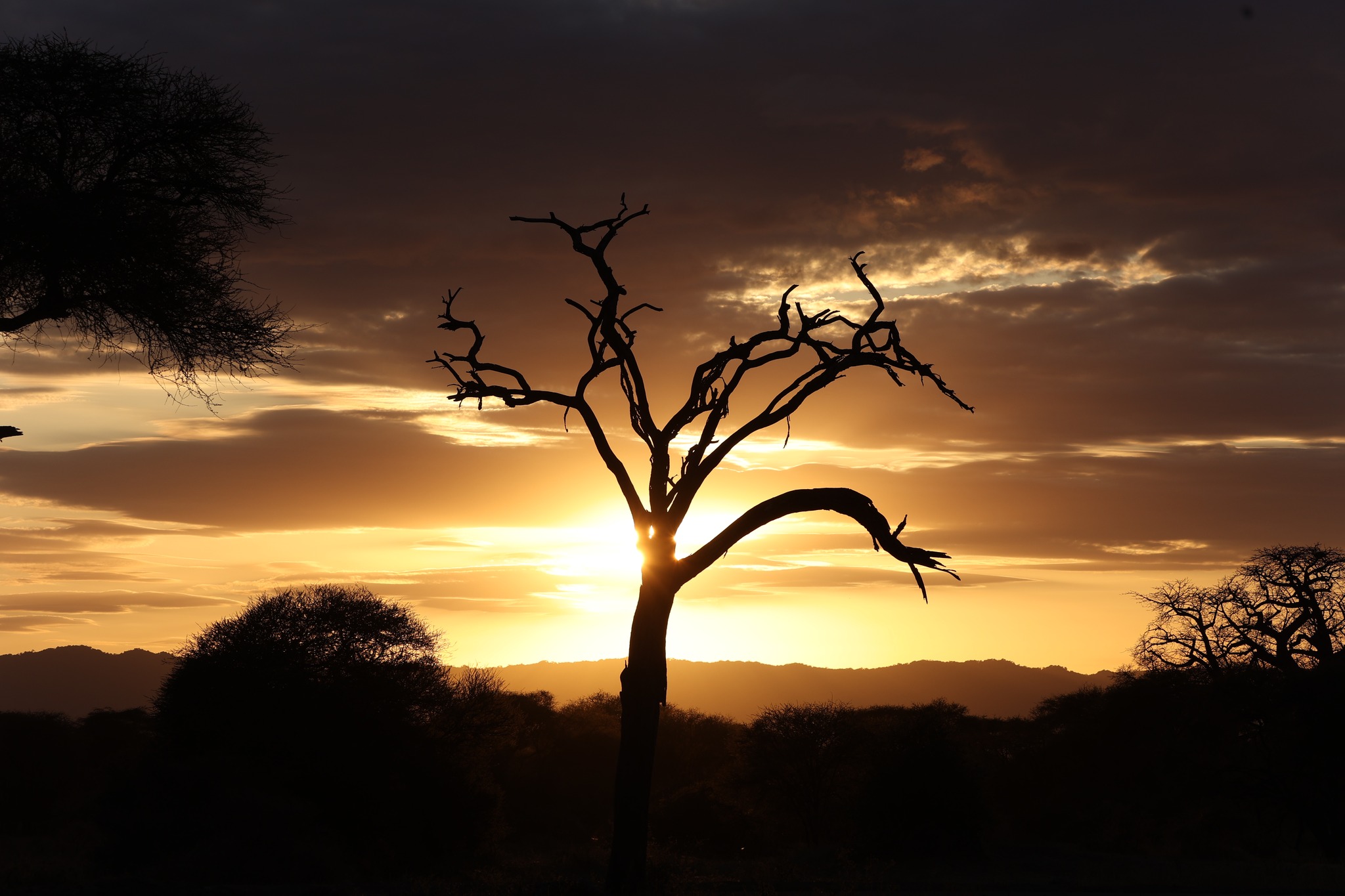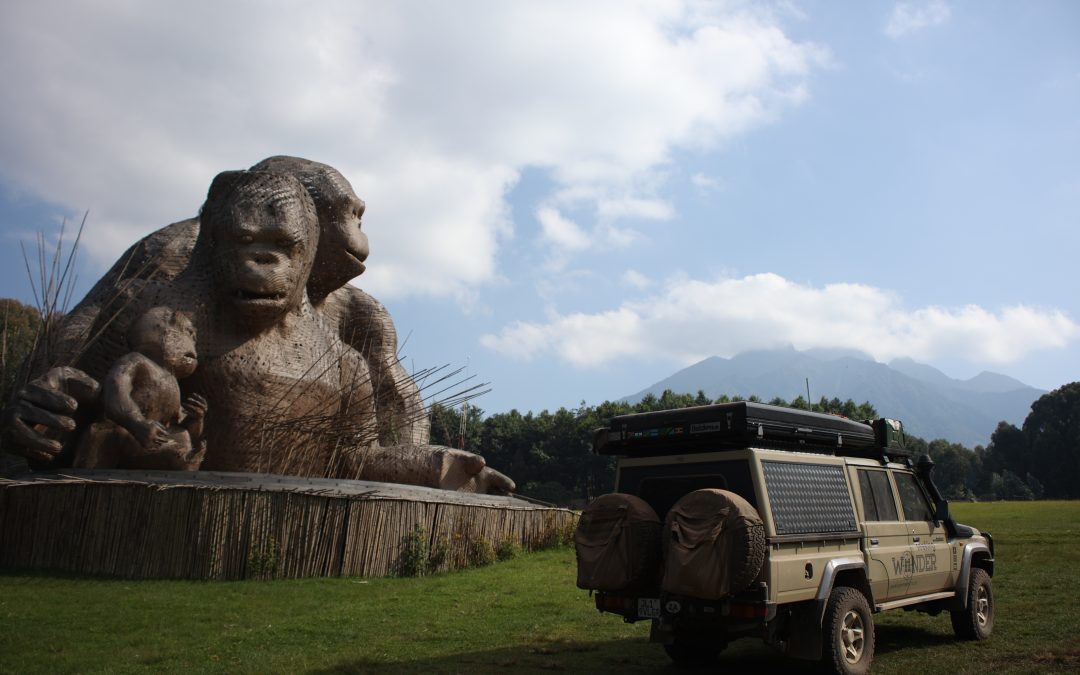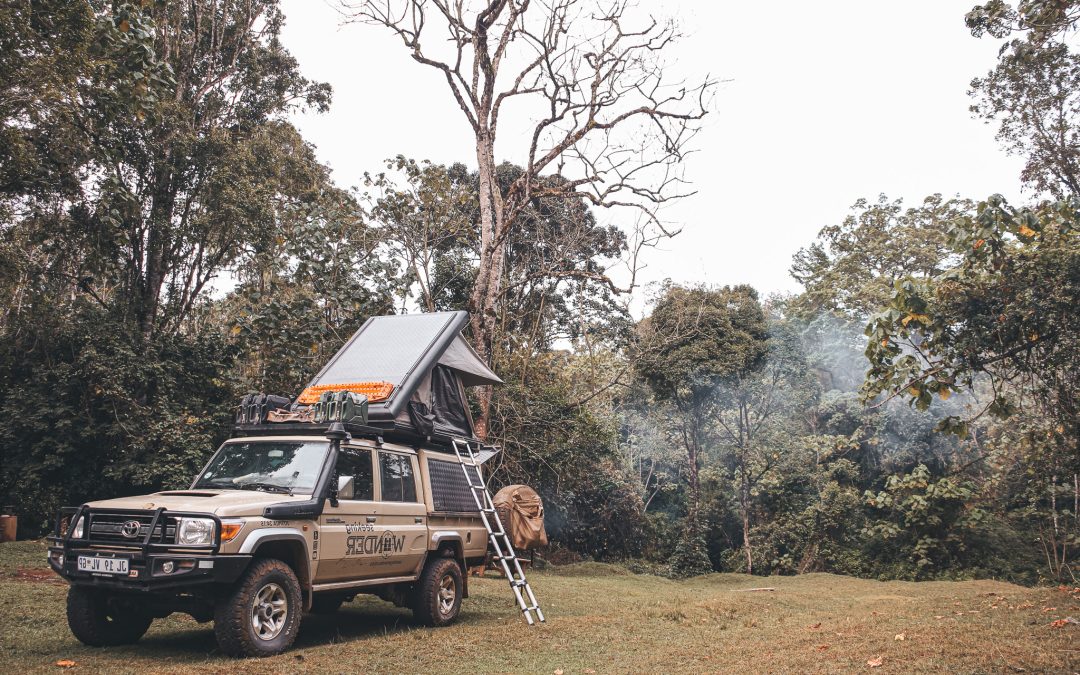
Forest hogs, ferns and trout
I flick the fly rod and watch with osprey-like intent as my small dry fly settles on the water surface and drifts along the bubbling stream. This could be any small stream in the world, until you look up and glimpse the beautiful crimson underwings of a Hartlaub’s turaco in the forest canopy above. Ferns droop along the stream edge, the raucous calls of Colobus monkeys echo through the valley, and the smell of fresh elephant dung fills the air. Fishing for trout in the forest streams of Kenya is quite unlike anywhere else indeed. We had come to this mountainous region looking for its fabled forest creatures, its famed beauty and the invariable adventure that accompanies such a jaunt, and were not disappointed to say the least.



A few days before, we had travelled up the Great Rift Valley from the Masai Mara, outspanning for a few days next to the beautiful Lake Naivasha. Set in a lush valley, the area offers fantastic wetland birding, unexpected culinary delights (like a real Italian pizzeria), and a fascinating history. The lake itself was used to land seaplanes enroute to South Africa from Britain in the 1940s and Joy Adamson (author of Born Free) called it home during the 60s. Today it houses a 45 MW geothermal power plant and Europe’s largest supply of roses is grown right here on its shores. After sharing camp with a couple of dusty overland bikers, we stopped for supplies at the Buffalo Mall, an establishment that could have been in South Africa (complete with a local Spur nogal!). Suitably replenished, we headed for the Aberdare Mountains.



Driving up the mountain pass along the western edge of the Aberdare National Park we traversed a variety of vegetation zones, including evergreen rainforest, dense bamboo belts and sub-alpine moorlands. Entering the park effectively though its back door, we were informed that the KWS had changed park entries to a new online pre-booking system, just the day before. Of course. Following a classic dog and pony show involving a helpful but confused gate guard, half a bar of 3G reception (under that tree over theeere), much rain and even more mud we finally managed to buy online permits and off we went, losing a mere 2 hours.
The Aberdares must surely rank as one of the most unique places in Kenya, if not the whole of Africa. Sometimes fondly referred to as Scotland with Lions, it has landscapes as diverse as its creatures, and offers a lot more than just being the site where Queen Elizabeth II became the British monarch when her father died. The high-altitude moorlands above 3 300 m has rolling hills of alpine grass, shrubs and heath. Camping here is a shivering business (‘could we be wearing any more clothes!?’), but well worth it. Waking up to the beautiful rolling calls of the locally endemic Jackson’s spurfowls and moorland chats is something we will always remember.



We hiked to remote and spectacular waterfalls, tucked away between the mountain folds. Driving through the forest areas, we were on constant lookout for the rare bongo antelope that still lives here, and a few similarly-coloured bushbuck got us really excited. We missed out on the bongo, but instead used up all our luck with a rare sighting of an entire family of giant forest hogs. These utterly beautiful creatures do not often reveal themselves and seeing them in their forest home was a rare privilege. Exiting the park near Nyeri, we invariably felt that we could spend much more time there. But we were heading further southeast towards the equator, and the most famous mountain in Kenya.
At 5 199 m, Mount Kenya has the second highest peak in Africa and, interestingly, the country takes its name from the mountain instead of other way around. A jagged extinct volcano with various snow-capped peaks and 11 ice glaciers, this mountain is not only a national icon and year-round water source, but also an adventurer’s playground. Serious hikers and climbers prefer the challenging aspects of Mt. Kenya to the gentler slopes of Mt. Kilimanjaro. Much of Kenya’s tea and coffee is grown around the fertile base, and the slightly higher mountain slopes are covered by lush evergreen forests. These forests are home to a very large variety of creatures, from endemic bird species to mammals like bongo, buffalo, elephant and leopard.



Our first stop was Castle Forest Lodge, situated at the end of a steep forestry road that gets very slippery when wet, i.e. most of the time. With a muddy Baloo looking like he just finished a warrior-race, we slid into camp and wished the wet wood into a cheerful little fire. The moist green surrounds are home to a plethora of birds, and we were lucky enough to see many specials like the thick-billed and streaky seedeater, Hunter’s cisticola, mountain thrush, white-starred robin and red-fronted parrot. We also explored the forest paths and found beautiful fern-clad waterfalls, returning to warm our hands around hot chocolate at the cosy little lodge restaurant.



A bit further on is the Ragati Conservancy, a veritable paradise of indigenous forest and bubbling streams. The conservancy preserves the sensitive afro-montane forest and supports environmental research, but also offers fly-fishing in this unique habitat on a variety of well-managed river beats. We camped on the lush banks of the Ragati river and explored some of the tributaries with two river guides to sure we don’t get lost in the thick jungle.
The trout here were stocked in the 1920s and have since developed a unique colouration, earning them the local name of Ragati Reds. The fishing was beautiful, varying from tiny nettle-clad channels, to fast-flowing riffles and bubbling pockets. We both got hooked in the overhead foliage multiple times, but eventually also landed a few eager forest trout. At night we were serenaded by forest creatures of all sizes, including the whooping of hyenas, the truly bizarre call of tree hyraxes, and the rumbling of nearby elephants.



A hungry little trout darts from an undercut to grab the bobbing fly and wake me up from my reflective trance. A short tussle and I slip it into the net before removing the fly. As I turn it over the sun catches its coloured spots, rendered even more dappled by the overhead forest canopy. We take a second to pause and admire its unique markings before releasing it back into the cold stream. Much like the past few days, time always seems suspended in the midst of remarkable beauty. The mountains of Kenya will hopefully see us again one day – for more forest hogs, ferns and trout.

Trip tips:
Mount Kenya
- Castle Forest Lodge has a beautiful campsite and is located in the mountainous forests of Mt Kenya, although not within the park boundaries, so park fees don’t apply. We really enjoyed the unique atmosphere and birding, as well as the short walks in the forest. Watch out for the muddy access road when it rains though!
https://www.castleforestlodge.com/
- The Ragati Conservancy must be on the top of our list for an amazing combination of forest camping, hiking, birding and fly-fishing all combined! A spectacular and well-managed conservancy within the forests of the mountain, directly adjacent to Mt. Kenya National Park. https://ragati.com/
Aberdare National Park
- Some park gates don’t have 4G network so pre-booking and paying online is a good idea: https://kws.ecitizen.go.ke/
- It is possible to drive in at one gate and out the other – we entered at the Western gate close to Nanyuki, and exited at the main Eastern gate close to Nyeri.
- We camped at the Reedbuck Campsite in the higher moorlands section and enjoyed it thoroughly! It gets very cold at night so bare that in mind.
- Take enough time to walk to the viewpoints and beautiful waterfalls – each one unique and beautiful!
Fly Fishing
- Kenya has a well-documented fly-fishing history and culture, and there are many high-altitude streams and rivers with thriving wild populations of brown and rainbow trout.
- Two general hotspots are the areas in and around the Aberdares mountains and Mt. Kenya.
- You can fly-fish on the streams within both national parks, but an angling permit (and in some cases also a guide as it is within big game areas) is needed, obtainable online at the KWS: https://kws.ecitizen.go.ke/
- We fished within the Ragati Conservancy, where river guides accompany you due to the elephants around. The Ragati river and its tributaries is fished in well-managed but rugged beats.
- The streams are typical 2-3 weight territory, with bow-and-arrow casting and 6-7X tippet being the order of the day. The typical array of small nymphs and dry flies such as PTNs, RABs, and Klinkhammers worked well for us.

